Last Updated on April 20, 2024 by themubbi63
Find below an alphabetical list of 195 animals whose names start with A and various fun facts about them. From the aardvark to the azawakh, there’s a variety of creatures to learn about. Some of the most common animals that start with a are ant, arctic fox, anteater, armadillo, antelope, anaconda, ape, angelfish and American robin.
Animals That Start with A
Aardvark
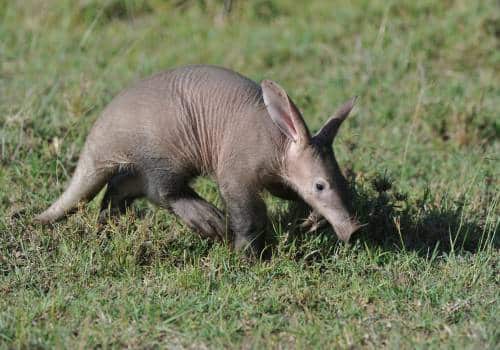
Kingdom: Animalia
Phylum: Chordata
Class: Mammalia
Order: Tubulidentata
Family: Orycteropodidae
Genus: Orycteropus
Scientific Name: O. afer
Fun Fact: Have a 30 cm long sticky tongue and can eat upto 60,000 ants and termites in a day.
These nocturnal, burrowing mammals are native to Africa and are the only living species within their order. Their name means ‘earth pigs’ and ‘aardvark’ happens to be the first word in the English dictionary. They have the snout of a pig and the ears of a rabbit but aren’t closely related to either species. In fact, they might be most closely related to elephants! They often live in termite mounds and change their burrows frequently. They’ve got good vision at night but are almost blind in daylight.
Aardwolf
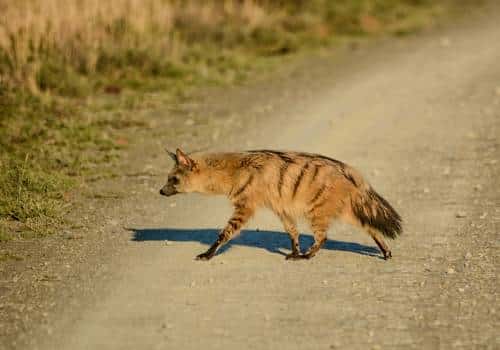
Kingdom: Animalia
Phylum: Chordata
Class: Mammalia
Order: Carnivora
Family: Hyaenidae
Genus: Proteles
Scientific Name: P. cristatus
Fun Fact: Aardwolves mostly communicate through smell and secrete a musky fluid from special anal glands.
For all that they’re closely related to hyenas, the main food source of the aardwolf is insects like termites. Their name means ‘earth wolf’ in Afrikaans since they live underground in burrows and only emerge at night to forage for food. It has stripes along its back and a long mane that it fluffs up when it wants to look intimidating. Found in the dry grasslands of Africa, aardwolves usually avoid mountainous areas. Although they’re usually solitary, they may form monogamous pairs during mating season.
Abyssinian Cat
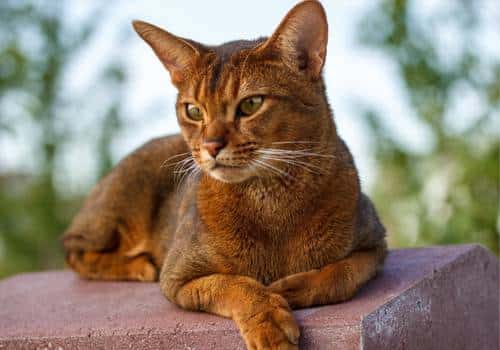
Kingdom: Animalia
Phylum: Chordata
Class: Mammalia
Order: Carnivora
Family: Felidae
Genus: Felis
Scientific Name: F. catus
Fun Fact: More like dogs than cats because of their energy levels and attachment to family members.
A domestic breed of cats whose origins are absolutely unknown, the Abbysinian has what is known as a ticked coat – their coats have strands with bands of color that are lighter at the base and grow lighter towards the tip. They have very large pointed ears. Some people believe that the predecessors of Abbysinians were revered by the pharaohs. First brought to Europe sometime in the 1800s from Ethiopia (or Abbysinia), they’ve only become a popular domestic breed recently.
Abyssinian Guinea Pig
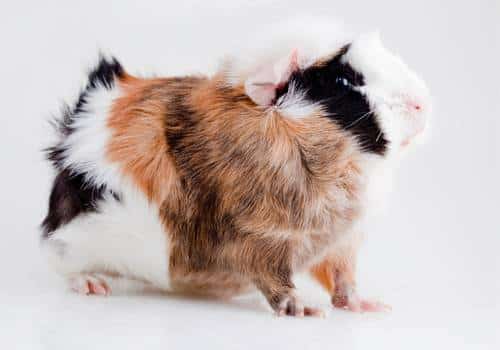
Kingdom: Animalia
Phylum: Chordata
Class: Mammalia
Order: Rodentia
Family: Caviidae
Genus: Cavia
Scientific Name: C. porcellus
Fun Fact: With swirly, curly hair that looks like messy bedhair, these guinea pigs are very cool.
This breed of guinea pig is often used as a show animal because of its unique hair patterns. With coats that have swirls of hair called rosettes on them, Abyssinian guinea pigs come in a variety of colors. The funny thing about these little creatures is that their rosettes must always be in even numbers, usually eight or ten. Despite their name, there’s no evidence that they’re from Ethiopia, seeming to be of Incan origin actually. They’re playful and affectionate by nature and make for great pets.
Acadian Flycatcher
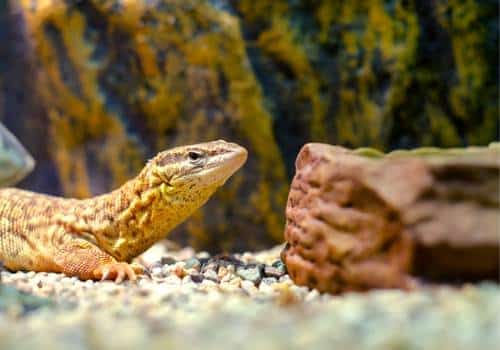
Kingdom: Animalia
Phylum: Chordata
Class: Aves
Order: Passeriformes
Family: Tyrannidae
Genus: Empidonax
Scientific Name: E. virescens
Fun Fact: Excellent fliers and their method of bathing is to dive chest first into the water and perch on a branch to shake off the droplets.
Found in North and South America, the Acadian flycatcher has a distinctive call that is often described as ‘peet-sa’. It nests in deciduous forests and often near water. This flycatcher, interestingly, builds very sloppy nests that look like they’re abandoned and falling apart. With an olive back and tail and whitish tummy, it’s a rather drab looking bird. But what it lacks in appearance, it makes up for in flying ability. These birds are extremely deft and maneuverable.
Achrioptera Manga
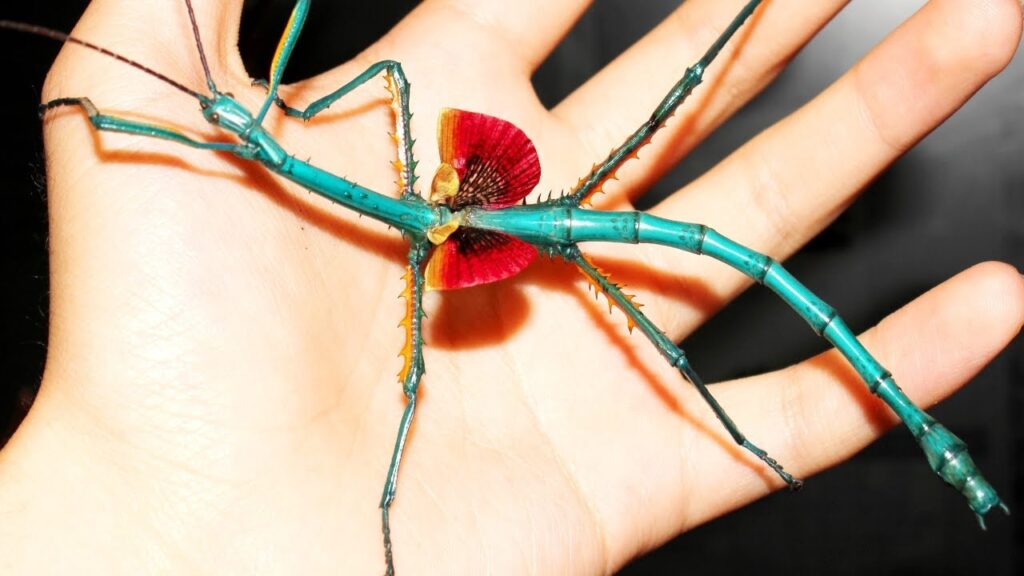
Kingdom: Animalia
Phylum: Arthropoda
Class: Insecta
Order: Phasmatodea
Family: Phasmatidae
Genus: Achrioptera
Scientific Name: A. manga
Fun Fact: Unlike all other stick insects, the male Achrioptera manga stands out by being bright blue.
Found in Madagascar and the Comoros Archipelago, the Achrioptera manga is an especially large species of stick insect. In fact, they can reach lengths of 9.4 inches or 24 cm. The males are blue and that’s where the name comes from (since ‘manga’ means ‘blue’ in the Malagasy language). They were only classified as a different species in 2019 since they were misidentified as another kind of stick insect before that.
Ackie Monitor
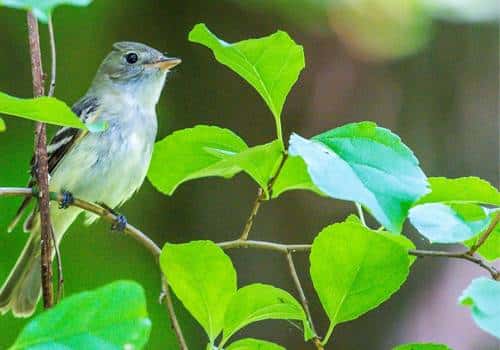
Kingdom: Animalia
Phylum: Chordata
Class: Reptilia
Order: Squamata
Family: Varanidae
Genus: Varanus
Scientific Name: V. acanthurus
Fun Fact: Have spiny tails with which they protect themselves from predators.
The colloquial name ‘ackie’ comes from their scientific name ‘acanthurus’. Also called the spiny-tailed monitor, this species is native to Australia and can’t be found in any other continent. Usually found in two colors, the red ackie is much more striking and much less common than the yellow ackie. With a tail that can be double the size of the body and head combined, these animals are often valued as pets. In the wild, their natural habitat is arid and dry areas with lots of rocks and sandy soil.
Acorn Weevil
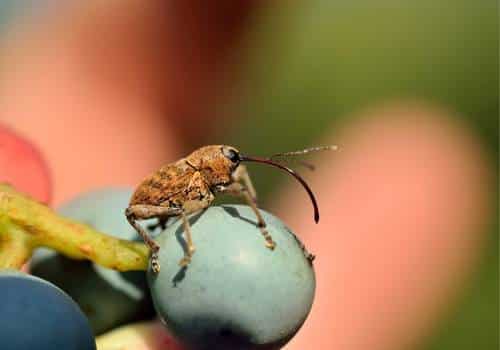
Kingdom: Animalia
Phylum: Arthropoda
Class: Insecta
Order: Coleoptera
Family: Curculionidae
Genus: Curculio
Scientific Name: C. glandium
Fun Fact: Their eggs are deposited inside acorns when the adult weevil chews tunnels in the fruit.
These tiny insects, measuring just about 4 – 8 mm in size, have strikingly long snouts. These snouts are called rostrum and are longer in females than in males. The reason for this is their burrowing tendencies and their habit of laying eggs inside acorn fruits. So you should watch out the next time you want to try eating one. Found commonly in Europe, these insects can cause a lot of harm to acorns and oak trees in general.
Addax
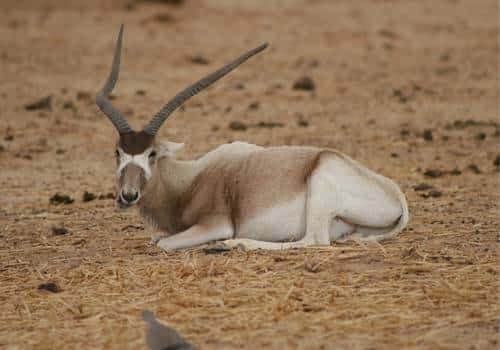
Kingdom: Animalia
Phylum: Chordata
Class: Mammalia
Order: Artiodactyla
Family: Bovidae
Genus: Addax
Scientific Name: A. nasomaculatus
Fun Fact: Addax are one of the most ancient domesticated animals, dating back to ancient Egypt 5000 years ago.
One of the rarest animals in Africa, the addax is a kind of antelope that are well-suited to desert conditions. They live in extreme heat, have wide, splayed hooves that allow them to walk over sand and barely need to drink any water. They’re also nocturnal which makes sense since that’s when the temperature is lowest. They live in medium-sized herds of about 20 individuals and are matriarchal in nature, having a female leader. Female addax give birth to just one baby a year.
Adélie Penguin
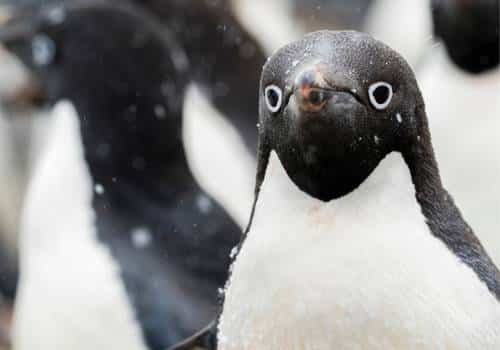
Kingdom: Animalia
Phylum: Chordata
Class: Aves
Order: Sphenisciformes
Family: Spheniscidae
Genus: Pygoscelis
Scientific Name: P. adeliae
Fun Fact: Named after the wife of the French Antarctic explorer Jules Dumont d’Urville who discovered them – Adéle.
They’re the smallest of the penguins found in Antarctica but their black and white flippers are very powerful for their size. These penguins have been known to deal with bigger predators like seals with a slap. The males build nests for their mates using small rocks and occasionally steal a rock or two from their neighbors. These penguins moult once a year and don’t feed during the entire three weeks because they aren’t waterproof during this time.
Admiral Butterfly
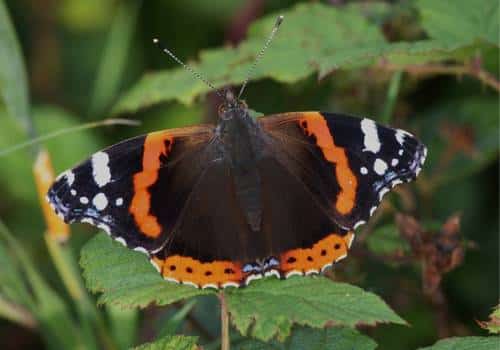
Kingdom: Animalia
Phylum: Arthropoda
Class: Insecta
Order: Lepidoptera
Family: Nymphalidae
Fun Fact: The largest family of butterflies with the flashiest of wings.
Usually medium sized or large butterflies, they come in a variety of colors. From black and white to brilliant blues and striking reds, you’ll see them all with this family. They’re also called brush-footed butterflies of the tiny brush-like set of hairs on their forelegs. Emperors, tortoiseshells, monarch butterflies and fritillaries are some of the most popular species of admiral butterflies. Given the pretty colors on top of their wings, it might be a surprise to learn that the underside of their wings is pretty drab. They look like dead leaves and allow the butterflies to blend in with their surroundings.
Aesculapian Snake
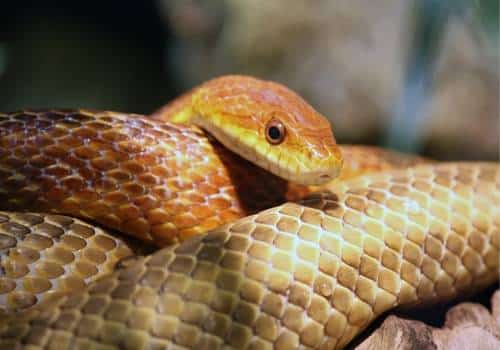
Kingdom: Animalia
Phylum: Chordata
Class: Reptilia
Order: Squamata
Family: Colubridae
Genus: Zamenis
Scientific Name: Z. longissimus
Fun Fact: Excellent climbers and can climb straight up a vertical tree trunk without any branches or twigs.
These non-venomous rat snakes are native to parts of Europe and can grow to the impressive average size of 6 feet (1.8 m). Usually a dark bronze in color, the smooth scales of this species have a metallic sheen. Juveniles have distinctive spots and markings on their backs which fade with adulthood. With great cultural significance in ancient Greece and Rome, these snakes were associated with the god of healing Asclepius. Even now, his staff entwined with the snake is a medical symbol in many parts of the world.
Affenpinscher

Kingdom: Animalia
Phylum: Chordata
Class: Mammalia
Order: Carnivora
Family: Canidae
Genus: Canis
Scientific Name: C. lupus familiaris
Fun Fact: Often nicknamed ‘monkey dog’ because of their expressive facial features.
These shaggy little dogs were first bred in Germany in the 17th century as ratters although now they basically serve as small companion dogs. There was once a larger size but that has since gone extinct. Highly energetic and lively, they’re very confident and intelligent and make for good watchdogs. Despite being small, they’re completely fearless and come in a variety of colors. They don’t shed too much and aren’t typically very vocal although they can bark a lot if they take it into their heads to do so.
Afghan Hound
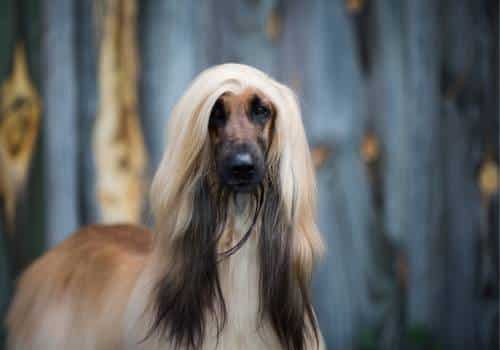
Kingdom: Animalia
Phylum: Chordata
Class: Mammalia
Order: Carnivora
Family: Canidae
Genus: Canis
Scientific Name: C. lupus familiaris
Fun Fact: Almost as fast as racehorses, they were first bred as hunters.
One of the oldest dog breeds in the world whose origins remain shrouded in mystery, Afghan hounds aren’t just long, silky haired marvels to look at. No, these majestic creatures were first bred as working dogs, as hunters and guard dogs. With their large bodies and beautiful coats, they aren’t the right pet for just anybody but they’re certainly eye-catching. Afghan hounds can run at a speed of 40 mph. They’re scent hounds with very keen senses and have huge paw-pads that act as shock absorbers when they’re running over rocky terrain.
African Bullfrog
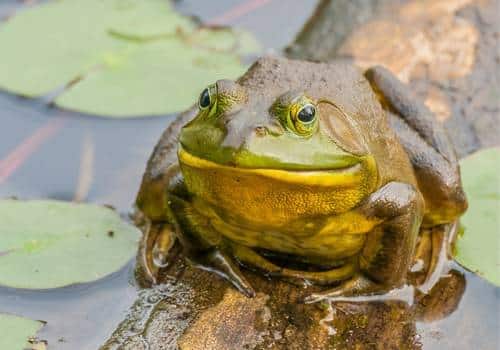
Kingdom: Animalia
Phylum: Chordata
Class: Amphibia
Order: Anura
Family: Pyxicephalidae
Genus: Pyxicephalus
Scientific Name: P. adspersus
Fun Fact: Occasionally cannibalistic, adults and tadpoles may sometimes eat each other or African bullfrog eggs.
One of the largest frogs in the world, African bullfrogs can survive in a number of different habitats. They can live in the middle of the Kalahari desert as well as cold plains that are 5000 feet high. They often burrow underground to withstand extremes of temperature. They’re one of the only three species of frogs to have teeth, which is a highly unusual sight to see. They’re an extremely aggressive species of frog and this behavior becomes even more evident during mating season.
African Bush Elephant
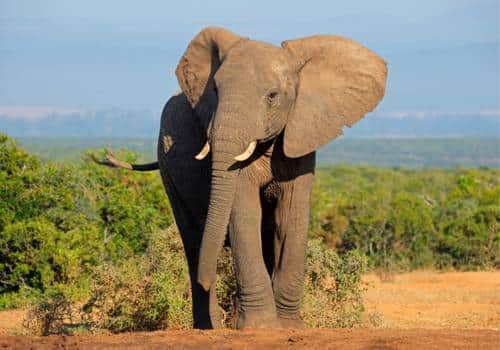
Kingdom: Animalia
Phylum: Chordata
Class: Mammalia
Order: Proboscidea
Family: Elephantidae
Genus: Loxodonta
Scientific Name: L. africana africana
Fun Fact: Largest land mammal in the world.
Living till around 70 years of age and reaching a total weight of 6000 kg, the African bush elephant is one of the most majestic animals in the world. Even a newborn calf can weigh about 120 kg so you can imagine just how big these creatures are. They use their massive trunks to drink water and can fit 8 liters of water inside their trunks. They’re some of the most sensitive organs that elephants have. They need to eat 150 kg of food in a day. Really, they spend three quarters of the day just eating.
African Civet
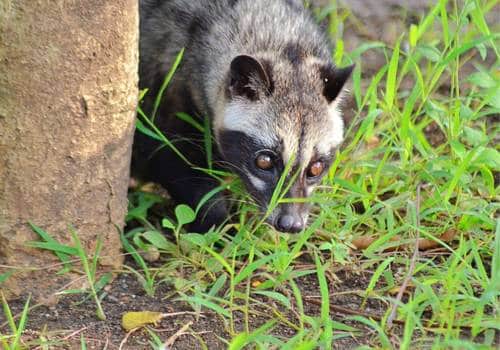
Kingdom: Animalia
Phylum: Chordata
Class: Mammalia
Order: Carnivora
Family: Viverridae
Genus: Civettictis
Scientific Name: C. civetta
Fun Fact: They belong to the same family as the mongoose even though people associate them with cats.
They live in dese woodlands and forests with thick vegetation and they love eating millipedes (even though millipedes have high amounts of cyanide). A black and white animal with a mane down their spine, they are about the same size as a raccoon. They secrete a pungent scent from their anal glands and that substance is often used in perfumes. They’re omnivores and scavengers and sometimes they eat the contents of the stomachs of herbivores for the grass.
African Clawed Frog
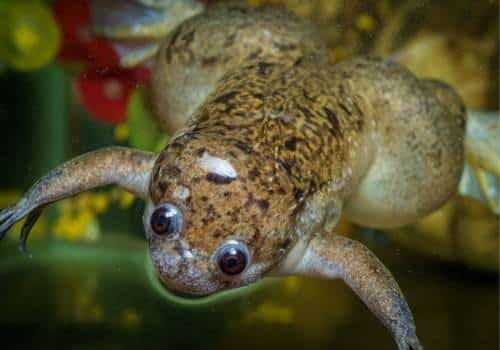
Kingdom: Animalia
Phylum: Chordata
Class: Amphibia
Order: Anura
Family: Pipidae
Genus: Xenopus
Scientific Name: X. laevis
Fun Fact: Historically they’ve been used for pregnancy testing.
Found naturally throughout sub-Saharan Africa, there have been some introduced populations in other continents like Asia, Europe, North America and South America. However, they’re considered an invasive species in Europe now. They’ve got long, distinct claws and they use their forelegs to shove food into their mouths. They’re an aquatic species with powerful backlegs for swimming. They’re often used in labs for research purposes, especially to study the molecules and cells of vertebrate animals and genome sequencing projects.
African Elephant
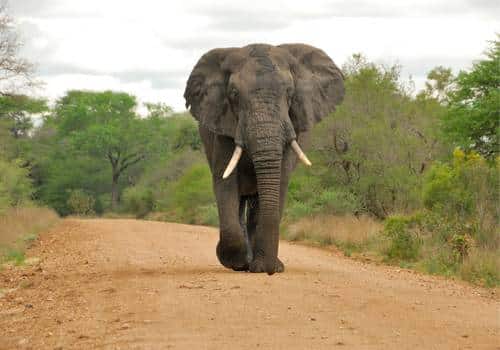
Kingdom: Animalia
Phylum: Chordata
Class: Mammalia
Order: Proboscidea
Family: Elephantidae
Genus: Loxodonta
Scientific Name: L. africana
Fun Fact: Unlike woolly mammoths of the past, African elephants actually have very little hair.
Usually divided into two categories – bush elephants and forest elephants – African elephants are the largest terrestrial animals in the world. They’re quite a bit larger than Asian elephants and can easily be distinguished. Unlike Asian elephants, both male and female African elephants have tusks (only male Asian elephants have tusks). The forest elephants mostly live in the dense rain forests of west and central Africa while bush elephants live in the grasslands of sub-Saharan Africa.
African Fish Eagle
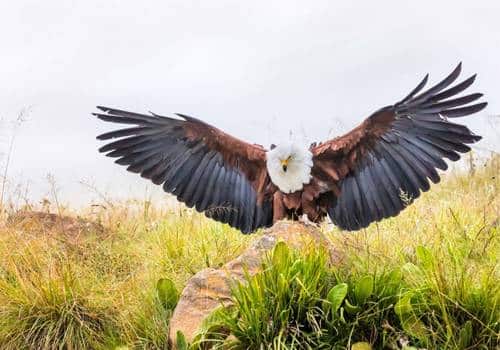
Kingdom: Animalia
Phylum: Chordata
Class: Aves
Order: Accipitriformes
Family: Accipitridae
Genus: Haliaeetus
Scientific Name: H. Vocifer
Fun Fact: Belongs to one of the most ancient genus of birds in the world.
Colloquially called eagles, they aren’t true eagles but belong to the Haliaeetus genus of sea eagles. Found throughout sub-Saharan Africa, the African fish eagle is the national bird of four countries – Namibia, Malawi, Zimbabwe and Zambia. It has a distinctive coloring of brown body and snow white head and their feet have powerful talons with barbs that can hook into their prey. In fact, these birds are so powerful that they can even hunt small waterfowl, crocodiles and flamingoes! They have a high, shrill call that sounds like heeah-heeah.
African Forest Elephant
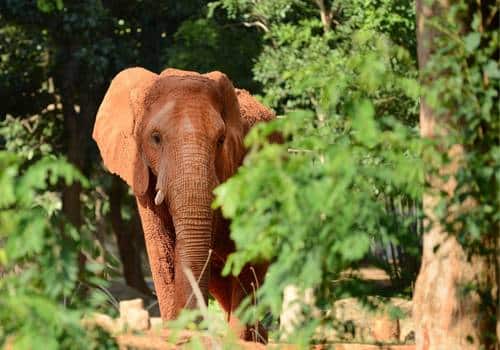
Kingdom: Animalia
Phylum: Chordata
Class: Mammalia
Order: Proboscidea
Family: Elephantidae
Genus: Loxodonta
Scientific Name: L. cyclotis
Fun Fact: Smallest of the three living elephant species.
The second species of African elephant, they are much more elusive and harder to see than their bush cousins. They have much lower rates of childbirth, which is why their status is critically endangered. They just can’t bounce back in population the way African bush elephants can. They’re found mostly in the Congo Basin now and they’re nicknamed the ‘megagardener of the forest’ because of their tendency to forage on leaves, fruit, seeds and tree bark. Habitat loss and poaching is a big concern for this species.
African Golden Cat
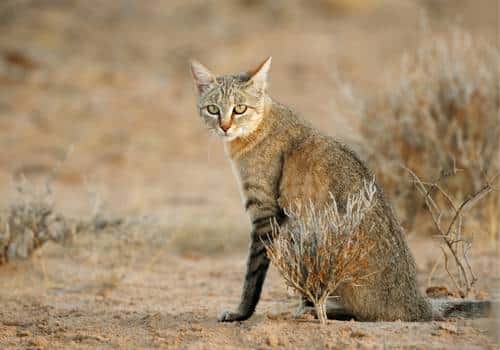
Kingdom: Animalia
Phylum: Chordata
Class: Mammalia
Order: Carnivora
Family: Felidae
Genus: Caracal
Scientific Name: C. aurata
Fun Fact: Contrary to the name, some specimens aren’t golden at all but grey in color.
These solitary animals can be either nocturnal (most active at night) or crepuscular (active during twilight). Double the size of a domestic cat, these animals are similar to the caracal but don’t have the distinctive tufted ears. The can and often are kept in captivity and have an average lifespan of 12 years when captive. We don’t know for sure what their lifespan in the wild is like. Ranging in shade from a reddish brown to brown grey to dark slate, for many years people believed there were two species. But actually these are just color variations in the same species.
African Grey Parrot
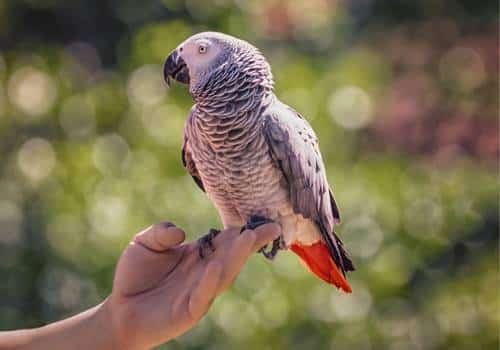
Kingdom: Animalia
Phylum: Chordata
Class: Aves
Order: Psittaciformes
Family: Psittacidae
Genus: Psittacus
Scientific Name: P. erithacus
Fun Fact: Extremely intelligent and mimic human speech very well.
One of the most common species of pet birds, African grey parrots are intensely social creatures. They’re monogamous birds and often nest in large groups. This is why African greys that are kept in captivity might often become depressed since they don’t get the company that they need. Largely grey in color with striking red tail feathers, they often live upto 60 years in captivity. In the wild, their lifespan may be considerably less – around 23 years.
African Jacana
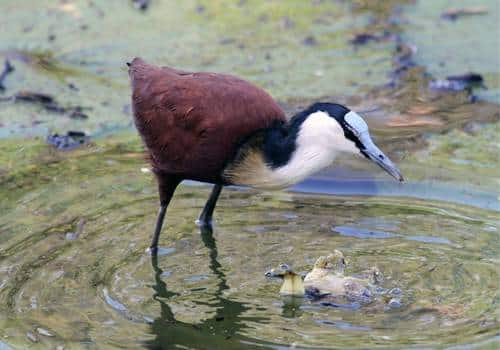
Kingdom: Animalia
Phylum: Chordata
Class: Aves
Order: Charadriformes
Family: Jacanidae
Genus: Actophilornis
Scientific Name: A. Africanus
Fun Fact: The males raise the babies and carry them under their wings.
These wader birds are usually found around lakes and wetlands in sub-Saharan Africa. They’re the heaviest of the Jacana family and have a chestnut colored back and wings. In juveniles, their underparts and necks are white but this deepens to chestnut in adults. Nicknamed lilytrotters because of their ability to walk on floating vegetation, these birds spend most of their time searching for aquatic insects to eat. The males are single dads and tend to their chicks alone while a female has multiple partners at a time.
African Palm Civet
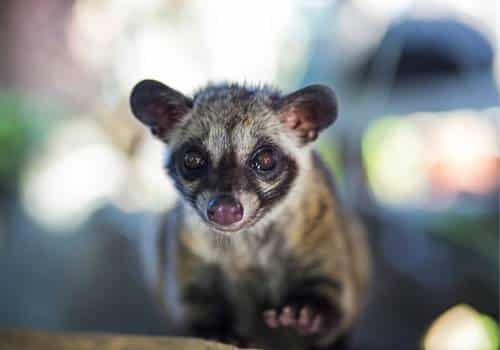
Kingdom: Animalia
Phylum: Chordata
Class: Mammalia
Order: Carnivora
Family: Nandiniidae
Genus: Nandinia
Scientific Name: N. binotata
Fun Fact: Primarily survives on fruits like figs, papayas, persimmon and African corkwood tree fruits.
Brown or grey animals that look somewhat like cats (even though they aren’t) with dark spots on their back, the African palm civet has a long, ringed tail. Just like the African civet, it has scent glands but these are located on the abdomen and between the third and fourth toes of each foot. These are solitary animals that use their scent glands to communicate with each other by marking their territories. They’re pretty adaptable and live in a variety of habitats but they spend most of their time up in tree branches and lianas.
African Penguin

Kingdom: Animalia
Phylum: Chordata
Class: Aves
Order: Sphenisciformes
Family: Spheniscidae
Genus: Spheniscus
Scientific Name: S. demersus
Fun Fact: Like using the guano of seabirds to line their nests.
The only penguin species found in Africa, they were in fact the first penguins ever described by Europeans (a crewmember from Vasco da Gama’s ships did it). They’re a raucous and noisy lot and their call has been compared to the braying of a donkey. The only countries where they are found are South Africa and Namibia and their numbers have gone down drastically over the last 200 years. There aren’t more than 10,000 breeding pairs left in the world today. They have black freckles on their chest and belly that are unique to each penguin.
African Sugarcane Borer
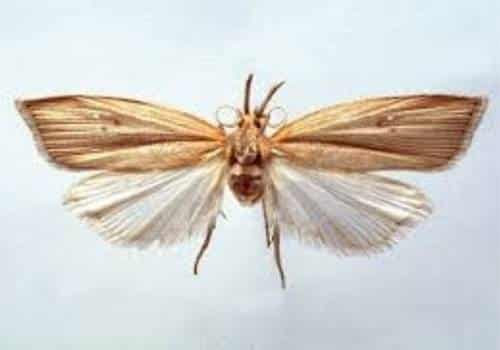
Kingdom: Animalia
Phylum: Arthropoda
Class: Insecta
Order: Lepidoptera
Family: Pyralidae
Genus: Eldana
Scientific Name: E. saccharina
Fun Fact: The only species of moth belonging to the Eldana genus.
With pale brown forewings and light brown hindwings, these moths are delicate and fragile in appearance. They’re commonly found in South Africa, Ghana, Mozambique, Sierra Leone and Equatorial Guinea and are considered pests because of their tendency to feast on maize and sorghum. Cassava and rice are other plants that they attack and they’re so resilient that they even survive crop burnings. However, their main host plant is sugarcane.
African Tree Toad
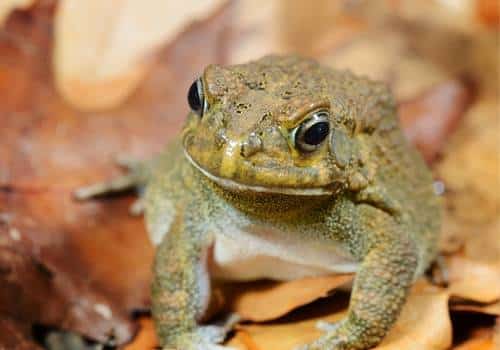
Kingdom: Animalia
Phylum: Chordata
Class: Amphibia
Order: Anura
Family: Bufonidae
Genus: Nectophryne
Scientific Name: N. afra
Fun Fact: The male guards the eggs that the female lays in small bodies of water.
Native to west and central Africa, they live mostly in lowland forests. They’re small toads with pretty short limbs. Terrestrial by day, they climb to vegetation by night. The pair often lays their eggs in shallow cavities in trees that are filled with water and the male alone guards these eggs after they are laid. They are now suffering from habitat loss. The countries where they’re mostly found are Gabon, Equatorial Guinea, Cameroon, southwestern Nigeria and northeastern Democratic Republic of the Congo.
African Wild Dog
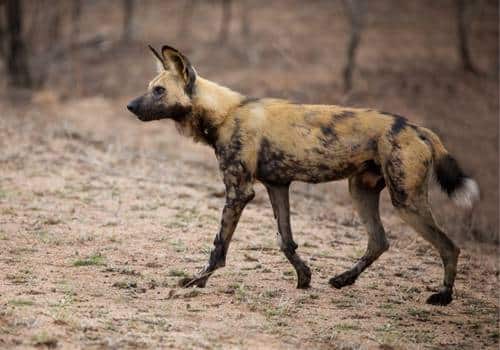
Kingdom: Animalia
Phylum: Chordata
Class: Mammalia
Order: Carnivora
Family: Canidae
Genus: Lycaon
Scientific Name: L. pictus
Fun Fact: Called painted dogs because of the beautiful patterns on their coats.
These wild dogs have unique patterns on each of their coats and no two individuals have the same patterns. They’re a mottled pattern of colors, ranging from red, black and brown to white and yellow. They can run at a speed of 44 mph, which is the same speed as a greyhound. Their method of communication is impeccable which is why their hunting success rate is 80 percent. They’re devoted pack animals with older members that will sacrifice food for the young.
Africanized bee (killer bee)
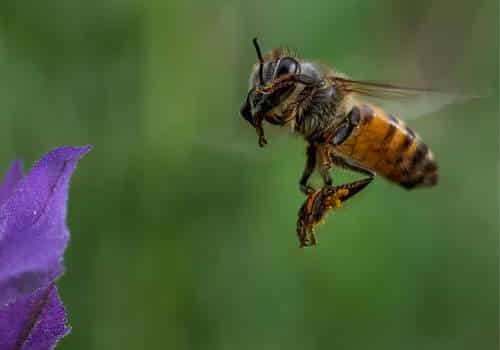
Kingdom: Animalia
Phylum: Arthropoda
Class: Insecta
Order: Hymenoptera
Family: Apidae
Genus: Apis
Scientific Name: A. mellifera
Fun Fact: Will pursue an enemy a quarter of a mile from the nest.
Africanized honey bees, often called killer bees, are actually hybrids from colonies of African honey bees that were imported to Brazil in 1956. The idea was to crossbreed them with local honey bees to improve honey production but several queen bees escaped from the experimental aviary and bred with European honey bees and formed a mish-mash breed. They’re extremely dangerous because they attack humans in great numbers, react to disturbances faster and will chase intruders for a long distance. These aggressive bees have become a big threat in South and Central America.
Agama Lizard
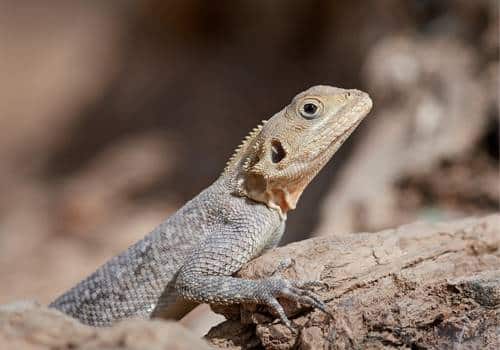
Kingdom: Animalia
Phylum: Chordata
Class: Reptilia
Order: Squamata
Family: Agamidae
Genus: Agama
Fun Fact: Insectivores but will eat small mammals if presented with opportunity.
Usually green or brown, dominant males might show off by turning their heads and bodies vibrant shades of red, yellow and blue. They have long sticky tongues that help them catch insects and they usually wait for the insect to come by. Agama lizards spend a lot of time sunning on rocks and dominant males usually pick the highest elevation to rest on. Spread through most of Africa, they usually live in forests, bushlands and in rocky terrains. Males show off their colors and move their heads around to establish dominance while females may fight each other.
Agkistrodon Contortrix
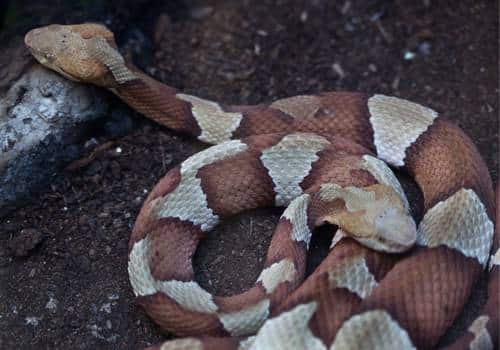
Kingdom: Animalia
Phylum: Chordata
Class: Reptilia
Order: Squamata
Family: Viperidae
Genus: Agkistrodon
Scientific Name: A. contortrix
Fun Fact: Favorite mode of self defense is freezing instead of slithering away.
Known as the eastern copperhead or simply copperhead in colloquial terms, these vipers have thick heavy bodies with dark brown hourglass shaped markings. Found in the deciduous forests and woodlands of North America, they’re ambush predators and rely on their markings to provide excellent camouflage. They don’t rush to attack humans and most bites are a result of people unknowingly stepping on them or near them. They’re one of the most common snakes in North America. They’re usually nocturnal during the peak of summer but are active during the day in fall and spring.
Agouti
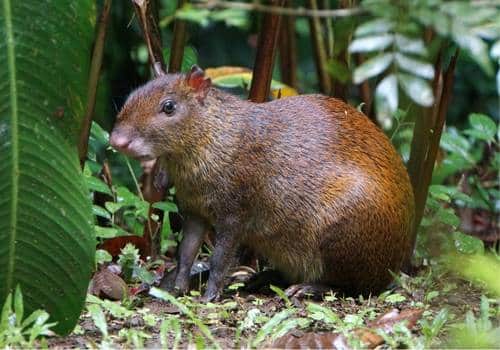
Kingdom: Animalia
Phylum: Chordata
Class: Mammalia
Order: Rodentia
Family: Dasyproctidae
Genus: Dasyprocta
Fun Fact: The only animal that is able to open the brazil nut.
Found in Brazil, Argentina and Paraguay, these animals are incredibly shy and hard to document. They’re cute, rabbit-like creatures that bolt and hide at the slightest disturbance. Thus, even though they’re very active during the day, they can be quite hard to spot. They’re excellent swimmers and they live underground in burrows. Often known as jungle gardeners because of their tendency to bury nuts and seeds and forget about them, they’re responsible for the growth of new plants. They’re also monogamous by nature and will stay with the same partner for life.
Aidi

Kingdom: Animalia
Phylum: Chordata
Class: Mammalia
Order: Carnivora
Family: Canidae
Genus: Canis
Scientific Name: C. lupus familiaris
Fun Fact: Not recognized by the American Kennel Club as a breed.
Originally mountain dogs from Africa, these dogs are intense and focused. Because of their lineage, they’re often focused on distractions and commotions in the background. This makes it essential to train and socialize them from a young age because they can be aloof and wary with strangers otherwise. Lean and muscular, these dogs have rough and thick coats that protect them from the weather. Their coat colours can vary between white, black, pale red, tawny and black and white. They aren’t as widely respected as the Sloughi which comes from the same area – the Atlas Mountains of North Africa.
Ainu

Kingdom: Animalia
Phylum: Chordata
Class: Mammalia
Order: Carnivora
Family: Canidae
Genus: Canis
Scientific Name: C. lupus familiaris
Fun Fact: Ainu are the oldest and most primitive of all Japanese dog breeds.
Also called Hokkaido, this is one of the six Japanese spitz breeds. A medium sized dog with a double coat and upright ears, the Ainu come in a number of colours – red, sesame, brindle, black, white, wolf grey and black and tan. They can be traced all the way back to the 1140s and are actually quite rare outside of Japan. The curly tails are very distinctive of this breed. They’re supposed to be great problem solvers and good at completing tasks. These dogs were bred as bear hunters so they can be very fierce.
Airedale Terrier
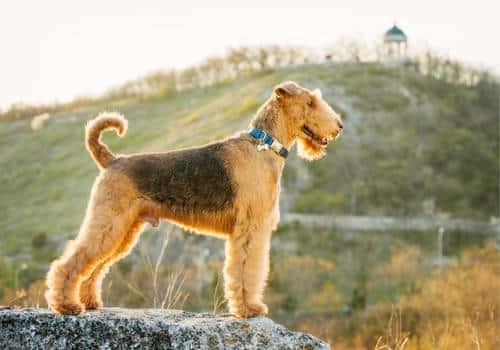
Kingdom: Animalia
Phylum: Chordata
Class: Mammalia
Order: Carnivora
Family: Canidae
Genus: Canis
Scientific Name: C. lupus familiaris
Fun Fact: One of this breed has earned a Victoria Cross.
Originating in the Aire river valley in England, these are the largest of all terrier breeds. They were bred as ratters, to hunt especially large rats and even competed in something called rat hunting contests, which attracted a lot of spectators. During WWI, they served in the military to carry messages and worked as a rescue dog for the red cross. And after that, they become one of the first breeds to be used as police dogs. Usually black and tan in color, they’re often called the King of Terriers.
Airedoodle

Kingdom: Animalia
Phylum: Chordata
Class: Mammalia
Order: Carnivora
Family: Canidae
Genus: Canis
Scientific Name: C. lupus familiaris
Fun Fact: Love being around people and make great family dogs
One of many poodle hybrids, this dog is a crossbreed of the Airedale terrier and the poodle. An energetic and friendly breed, these dogs are highly trainable because they’re eager to please. Typically tall dogs with long snouts and floppy ears, these dogs can come in a number of sizes as is natural with all poodle crossbreeds. They’re a newer breed and aren’t always very recognisable. But there are many to be found in shelters waiting for adoption. They do well with active families who have time to lavish on their pets.
Akbash

Kingdom: Animalia
Phylum: Chordata
Class: Mammalia
Order: Carnivora
Family: Canidae
Genus: Canis
Scientific Name: C. lupus familiaris
Fun Fact: Turkey’s national dog with a very long history
These Turkish guardian dogs might just be one of the most ancient breeds in the world since accounts of these dogs can be found as far back as 300 BCE. They’ve got protective instincts and are usually very alert. This makes them great guard dogs but it also means that they need to be socialized well as family dogs. Otherwise they might become aggressive. They usually have a very light colored coat and were bred that way because it helped the shepherd differentiate them from wolves. For big working dogs, their energy levels are quite low.
Akita

Kingdom: Animalia
Phylum: Chordata
Class: Mammalia
Order: Carnivora
Family: Canidae
Genus: Canis
Scientific Name: C. lupus familiaris
Fun Fact: Only the Japanese aristocracy and the Imperial family could own them once upon a time.
These Japanese dogs were originally bred in rural, mountainous areas to hunt bear and elk and look like bears themselves. Called ‘snow country dogs’ once upon a time, they’re very important to the history of Japan. They become highly energetic in cold weather and have webbed toes that help them walk on snow. American Akitas are relatively new and the famous activist Helen Keller was said to bring the first Akita to the US in 1937. They’re highly intelligent and strong willed working dogs.
Akita Shepherd
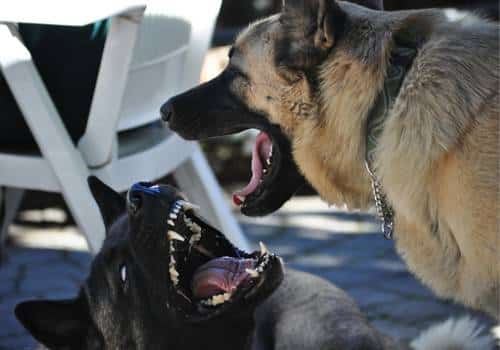
Kingdom: Animalia
Phylum: Chordata
Class: Mammalia
Order: Carnivora
Family: Canidae
Genus: Canis
Scientific Name: C. lupus familiaris
Fun Fact: Rare dogs that are purposely bred for families looking for good protectors.
A crossbreed between the Akita and the German shepherd, they’re relatively unknown dogs for now. With two highly intelligent and energetic parents, they need a lot of physical and mental stimulation. They’re guard dogs and quite independent by nature, capable of making their own decisions. You’ll have to be strong willed yourself in order to train them well. They’re serious dogs while at work but they can be quite goofy at playtime. Usually a mix of brown, tan and white colors, these dogs need to be socialized when young.
Alabai (Central Asian Shepherd)

Kingdom: Animalia
Phylum: Chordata
Class: Mammalia
Order: Carnivora
Family: Canidae
Genus: Canis
Scientific Name: C. lupus familiaris
Fun Fact: They’re always white in color.
The Alabai is also called the Central Asian shepherd or Central Asian ovtcharka and were bred as guardian dogs. They make good lifelong companions since they’re loyal to their families and love devotedly. Their history dates back thousands of years and these independent dogs have been working in those areas for a very long time. They’ve got double coats that help them survive the harsh winters and can be trained for vigorous physical exercise because of their muscular physique.
Alaskan Husky
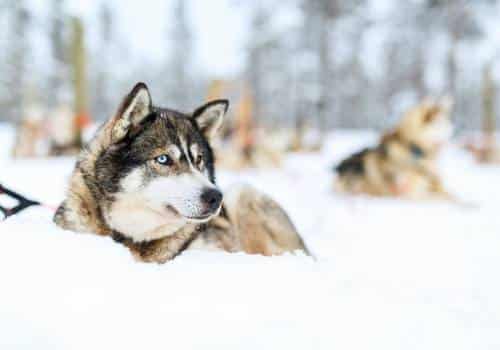
Kingdom: Animalia
Phylum: Chordata
Class: Mammalia
Order: Carnivora
Family: Canidae
Genus: Canis
Scientific Name: C. lupus familiaris
Fun Fact: Born to run long distances on very little food.
It’s a well-known fact that Alaskan huskies make for great sled dogs since they’ve got excellent stamina and endurance. They were probably bred by the semi-nomadic Chuckchi people of Siberia 3000 years ago (although this lineage is contested). They only came to Alaska in 1909 and impressed the people there by their ability to run. A group of huskies once saved a townfull of people in Alaska by transporting medicine over hundreds of miles to battle an outbreak of diphtheria. Huskies look wolfish but they’re one hundred percent dog.
Related Articles about dogs: Dogs breed and factcs
Alaskan Klee Kai

Kingdom: Animalia
Phylum: Chordata
Class: Mammalia
Order: Carnivora
Family: Canidae
Genus: Canis
Scientific Name: C. lupus familiaris
Fun Fact: Even though they’re sometimes referred to as miniature huskies they’re a completely different breed.
One of the newer and lesser known breeds, the Alaskan klee kai was bred by crossing huskies with American Eskimo dogs and Schipperkes. The American Kennel Club doesn’t recognize them as an official dog breed yet but they might be on their way soon. They aren’t very obedient or trainable by nature and have a tendency to wander off. It’s best not to let them off the leash except at home since they won’t come back unless they want to. However, they tend to be quite wary of strangers.
Alaskan Malamute

Kingdom: Animalia
Phylum: Chordata
Class: Mammalia
Order: Carnivora
Family: Canidae
Genus: Canis
Scientific Name: C. lupus familiaris
Fun Fact: Have a high prey drive and tend to dig holes when they get bored.
These large dogs, just like the husky, were bred to pull heavy loads over the frozen tundra. They do very well in cold weather and are extremely energetic. They’re also very vocal dogs. Not only do they bark quite a lot, they communicate via howls and small ‘woo woo’ noises. It’s their way of communicating with their owners. Their name comes from a tribe called Mahlemut and these dogs almost went extinct during the late 1800s. They were only saved because the Mahlemuts kept their dogs isolated and pure.
Alaskan Pollock
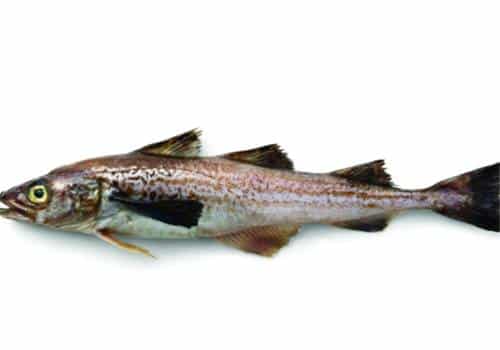
Kingdom: Animalia
Phylum: Chordata
Class: Actinopterygii
Order: Gadiformes
Family: Gadidae
Genus: Gadus
Scientific Name: G. chalcogrammus
Fun Fact: These fish eat other smaller fish
One of the most nutritious foods in the world, these fish are widely caught and eaten both in Alaska and abroad. In fact, it’s the most consumed wild-caught whitefish in the world. Only the wild fish caught in the frigid waters around Alaska are classified as Alaskan pollock. This species grows fast and doesn’t live long. Their scales are speckled which makes it more difficult for predators to see them when they hide out near the sandy ocean floors.
Alaskan Shepherd
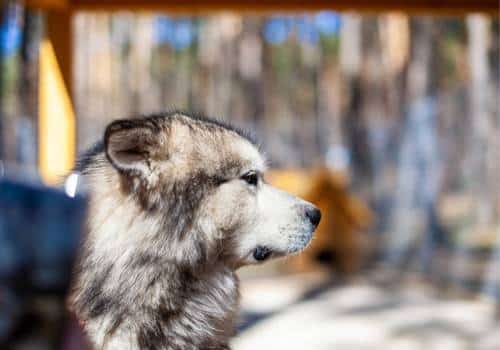
Kingdom: Animalia
Phylum: Chordata
Class: Mammalia
Order: Carnivora
Family: Canidae
Genus: Canis
Scientific Name: C. lupus familiaris
Fun Fact: A bundle of contradictions, they’re very independent but still like being given tasks to do.
A crossbreed between two large breeds, the Alaskan Malamute and the German shepherd, the Alaskan shepherd is a big doggo. These dogs can often look like big wolves even though neither of their parent breeds are wolf hybrids. They don’t make for good matches for families that are couch potatoes since they’re high energy dogs that always need to be occupied by some task. They’re intelligent and independent which means that daily training sessions are a must. Apart from looking like wolves, they’ve got some of the temperament of wolves too.
Related article: Tuna Fish Size: From Tiny Tins to Titans of the Deep – How Big Do They Get?
Albacore Tuna

Kingdom: Animalia
Phylum: Chordata
Class: Actinopterygii
Order: Scombriformes
Family: Scombridae
Genus: Thunnus
Scientific Name: T. alalunga
Fun Fact: Can swim at speeds faster than 50 mph.
With dark blue backs and a silver belly, albacore is one of the smaller tuna species. The torpedo shape and long pectoral fins allow them to swim very fast. They travel in large schools and migrate very long distances. In fact, not only do they live in most of the major oceans but even in the Mediterranean Sea. A lot of the canned tuna in the United States uses just albacore tuna and it is very important commercially. They’re a species of bluefin tuna, although much smaller than the other species.
Albatross
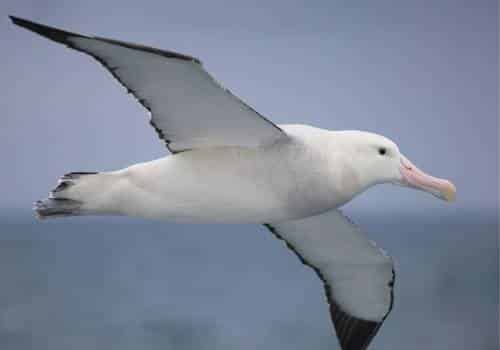
Kingdom: Animalia
Phylum: Chordata
Class: Aves
Order: Procellariiformes
Family: Diomedeidae
Scientific Name: Diomedeidae
Fun Fact: The largest wingspan of any living bird.
Known for their incredible flying ability (and their huge wingspans), the albatross spends about 80 percent of its life at sea. And usually when they nest, they choose remote islands to do so. This means that an albatross isn’t easy to spot. They’re a long-lived bird species, living upto 60 years and they usually mate for life. With an 8 – 10 feet wingspan, they can coast for miles without flapping their wings once and can travel thousands of kilometers in one single journey. Sailors have many myths and superstitions about these birds.
Albertonectes
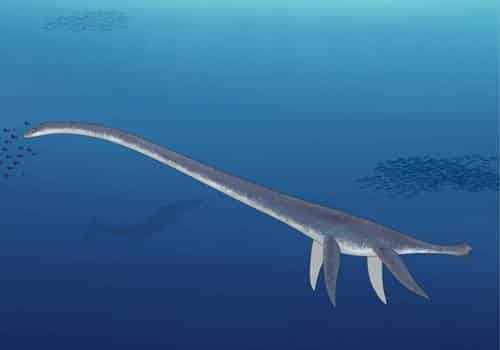
Kingdom: Animalia
Phylum: Chordata
Class: Reptilia
Order: Plesiosauria
Family: Elasmosauridae
Genus: Albertonectes
Scientific Name: A. vanderveldei
Fun Fact: Had more neck bones than any other known animal in history – 76.
This extinct genus had only this one single species which was the longest known plesiosaur that we’re aware of till date. The only fossil discovered so far was found near Alberta in Canada and is housed in the Royal Tyrrell Museum of Palaeontology there. Thought to live 73.5 million years ago, the individual that we’ve found was a mature one. It set a record for the longest neck of any plesiosaur that we’ve come across.
Albino (Amelanistic) Corn Snake
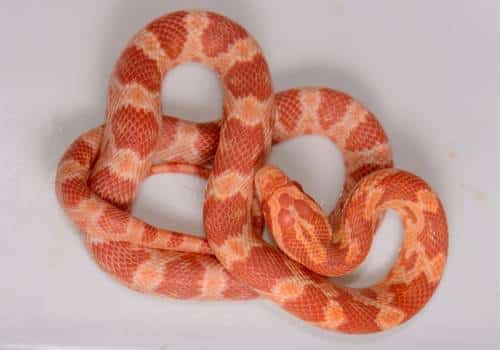
Kingdom: Animalia
Phylum: Chordata
Class: Reptilia
Order: Squamata
Family: Colubridae
Genus: Pantherophis
Scientific Name: P. guttatus
Fun Fact: Nocturnal creatures that remain hidden during the day
Found in parts of North America, corn snakes are one of several species of rat snakes that can be found in the US. While regular corn snakes are often mistaken for the venomous copperhead, albinism is a condition that is commonly found in this species. These snakes make for good pets and are often kept by beginners because they’re an easy and benign species. Albinism is a recessive trait that can occur naturally. Most albino animals don’t survive long in the wild because they lack the camouflage they need for protection. The first instance of an albino corn snake we discovered was in a albino snake caught in the wild.
Top Article: Snapping Turtle Size Explained & Compared With Others
Aldabra Giant Tortoise
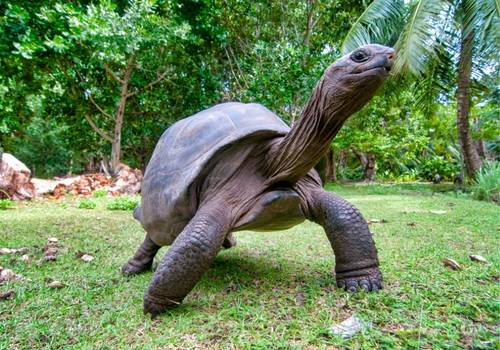
Kingdom: Animalia
Phylum: Chordata
Class: Reptilia
Order: Testudines
Family: Testudinidae
Genus: Geochelone
Scientific Name: G. gigantea
Fun Fact: The shell of a male can measure four feet in length.
One of the largest land tortoises in the world, the Aldabra is native to the Seychelles. Earlier, giant tortoises were found in many of the western Indian Ocean islands as well as Madagascar. However, they were driven to extinction by European sailors who hunted them. The shell of the Aldapra is of a high, domed shape and the tortoise has a very long neck. Male tortoises can weigh as much as 550 lb or 250 kg. They’re about the same size as the famous Galápagos giant tortoise.
Alligator Gar
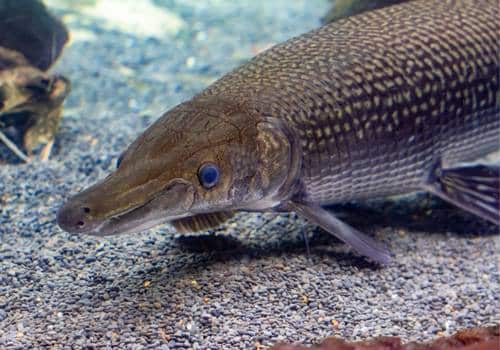
Kingdom: Animalia
Phylum: Chordata
Class: Actinopterygii
Order: Lepisosteiformes
Family: Lepisosteidae
Genus: Atractosteus
Scientific Name: A. spatula
Fun Fact: Only found in the Mississippi river and nowhere else.
Despite the name, the alligator gar is a type of fish and has nothing to do with the reptile it gets its name from. One of the largest freshwater fish in the world, they can weigh upto 350 lb or 158 kg. Lengthwise, they can grow up to 3 meters which makes them similar to alligators in at least one aspect. The alligator gar is one of the most ancient lineages of fish in the world and dates back to the time of the dinosaurs. Their eggs are poisonous.
Allosaurus
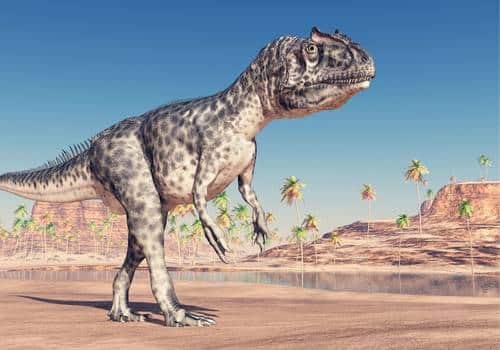
Kingdom: Animalia
Phylum: Chordata
Class: Reptilia
Order: Saurischia
Family: Allosauridae
Genus: Allosaurus
Scientific Name: A. fragilis
Fun Fact: Its name literally means ‘different lizard’.
This extinct dinosaur species has quite a lot of fossil evidence and belonged to the same group as the T. Rex of dinosaurs that ran around on their hind legs. Comprising at least seven species within the genus, it was the most commonly found large predator of its time period. In fact, there’s evidence that the allosaurus, at the top of the food chain, preyed on the mighty stegosaurus. Scientists have been able to discover that it had a relatively short lifespan of 25 years.
Alpaca
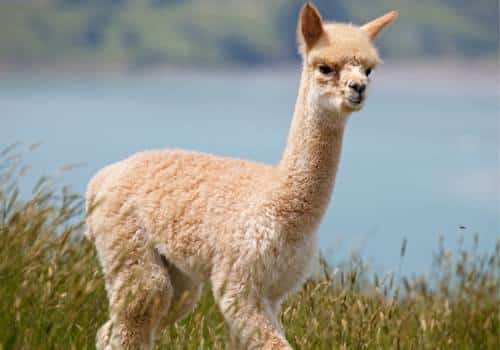
Kingdom: Animalia
Phylum: Chordata
Class: Mammalia
Order: Artiodactyla
Family: Camelidae
Genus: Vicugna
Scientific Name: V. pacos
Fun Fact: Alpacas can be used as therapy animals, just like dogs
One of the most ancient species in the world, these cousins of llamas and camels have some of the silkiest and most precious fur known to man. They’ve been domesticated for 6000 years, starting with the Incas in the region of the Peruvian Andes. There are more than 250,000 alpacas in North America now. Their fleece is of very good quality and is also hypoallergenic. The natural colors vary from rose grey to reddish brown. It’s even water resistant and is similar to cotton in some ways.
Alpine Dachsbracke
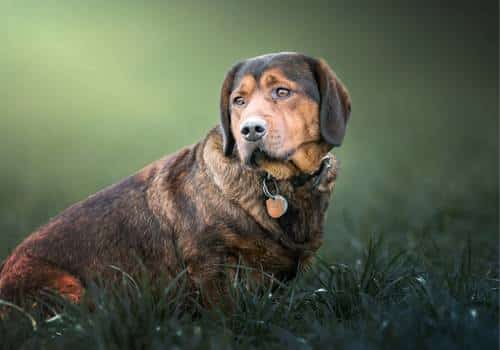
Kingdom: Animalia
Phylum: Chordata
Class: Mammalia
Order: Carnivora
Family: Canidae
Genus: Canis
Scientific Name: C. lupus familiaris
Fun Fact: Can follow a trail even after it goes cold.
These small German dogs look somewhat like the Dachshund with their short legs and long bodies. Their floppy ears and round eyes give them a very cute look. But don’t be fooled by that. They’re extremely efficient working dogs and were bred to track wounded deer, hare, fox and boar. These hunting dogs originated in Austria and are very sturdy in constitution. They’re usually a reddish brown in color with some black interspersed throughout.
Alpine Goat
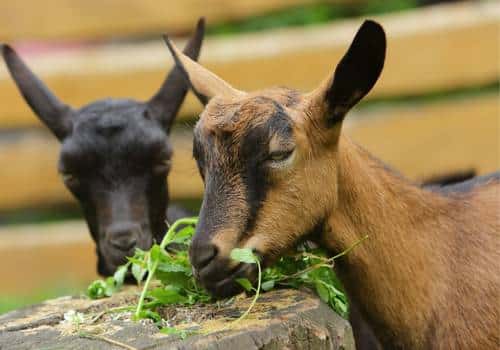
Kingdom: Animalia
Phylum: Chordata
Class: Mammalia
Order: Artiodactyla
Family: Bovidae
Genus: Capra
Scientific Name: C. aegagrus hircus
Fun Fact: Most common type of goat kept for use of milk.
Originating in the French Alps, these domestic goats are known for their good milking abilities. They have no specific color and can range from white to brown or black. Used both on homesteads and for commercial dairy production, their milk makes good quality cheese, butter, ice cream and soap. They’re a pretty large breed of goat and have erect ears. They’re hardy animals and can adapt to a variety of climates and temperatures.
Alusky
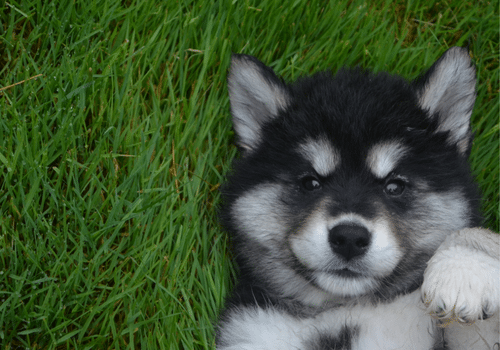
Kingdom: Animalia
Phylum: Chordata
Class: Mammalia
Order: Carnivora
Family: Canidae
Genus: Canis
Scientific Name: C. lupus familiaris
Fun Fact: Boundless amounts of energy make them unsuitable for small homes.
This crossbreed between an Alaskan husky and an Alaskan Malamute is a high energy dog that comes from parent breeds with very similar backgrounds. Both huskies and malamutes were used almost exclusively as sled dogs and have very wolfy looks. Thus, the Alusky might be mistaken as a wolf hybrid but it isn’t. They’ve got playful personalities and need a lot of exercise. They grow bored and frustrated when they aren’t mentally and physically stimulated so they need a lot of training.
Amano Shrimp
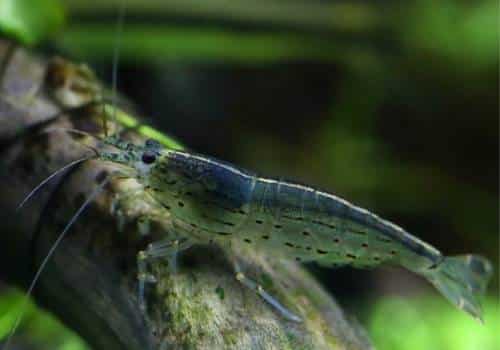
Kingdom: Animalia
Phylum: Arthropoda
Class: Malacostraca
Order: Decapoda
Family: Atyidae
Genus: Caridina
Scientific Name: C. multidentata
Fun Fact: Best cleaner shrimp in the world that eat all kinds of algae.
These shrimp are very pretty to look at because of their translucent bodies with a line of reddish brown points on their sides. They’re often kept in aquariums, not just because of their pretty looks but also because they’re very useful for eating up pesky algae. Amano shrimp are actually omnivorous and also eat dead and decaying plant matter as well as other kinds of shrimp, fish, worms and snails. If you forget to clean your aquarium from time to time, you needn’t worry because they’ll do it for you.
Related Article: Can Cats See in the Dark? Unveiling the Weakness And Strength 2024
Amargasaurus
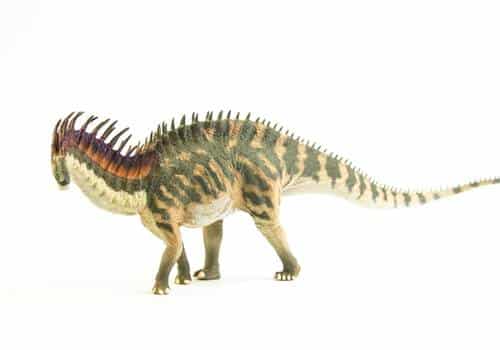
Kingdom: Animalia
Phylum: Chordata
Family: Dicraeosauridae
Genus: Amargasaurus
Scientific Name: A. cazaui
Fun Fact: The skull of the amargasaurus that has been discovered is fractured and only the back is preserved.
These dinosaurs, found in what is now Argentina, were first discovered in 1984. Only one almost complete skeleton has been found. It’s a sauropod dinosaur with the typical long necks and tails and small heads and just like other sauropods is a herbivore. This particular dinosaur had two lines of spines down its neck and back which were taller than any other sauropod.
Amazon Parrot
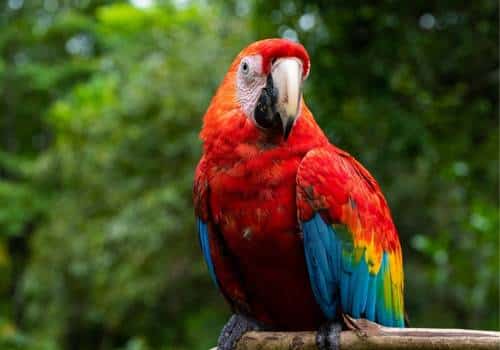
Kingdom: Animalia
Phylum: Chordata
Class: Aves
Order: Psittaciformes
Family: Psittacidae
Genus: Amazona
Fun Fact: First called Kricken – French for screechers
Ranging from Mexico and the Caribbean to South America, this genus of parrots has about 30 species. Mostly found in vivid shades of green, Amazon parrots might also have some yellow and red mixed in. They’re extremely adept at mimicking human speech which has made them highly valued as pets. However, the United States and European Union have now made it illegal to capture wild parrots for the pet trade since several species have become threatened. Like most parrots, they’re long-lived and monogamous by nature.
Amazon River Dolphin (Pink Dolphin)
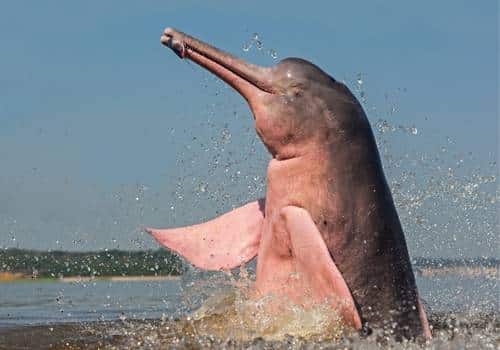
Kingdom: Animalia
Phylum: Chordata
Class: Mammalia
Order: Cetacea
Family: Platanistoidea
Genus: Platanistidae
Scientific Name: Platanistoidea
Fun Fact: They blush bright pink when they’re excited.
The Amazon river dolphin is the most recognizable but they aren’t the only river dolphins found in the Amazon river. Nor are they only found in the Amazon since you’ll see them in the Orinoco river basin as well. These dolphins are the smartest of the five living species of river dolphins and have a 40 percent larger brain capacity than humans. From rose pink to a dusky grey pink, these dolphins come in all shades. They can turn their heads a neat 180 degrees.
Amazon Tree Boa
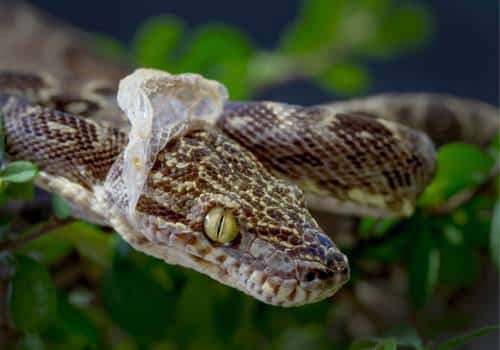
Kingdom: Animalia
Phylum: Chordata
Class: Reptilia
Order: Squamata
Family: Pythonidae
Genus: Corallus
Scientific Name: C. hortulanus
Fun Fact: Unlike many snakes, they have great eyesight.
Found in several countries in South America, these snakes are ambush predators. They hang from trees in an S-shape and strike at their prey when it comes by. They can hunt during both day and night and use special infrared receptors to sense heat in the dark. They usually stay in trees although they will occasionally venture to the forest floor. Their favorite prey are rodents, frogs, lizards, bats, birds and marsupials.
Amazonian Royal Flycatcher
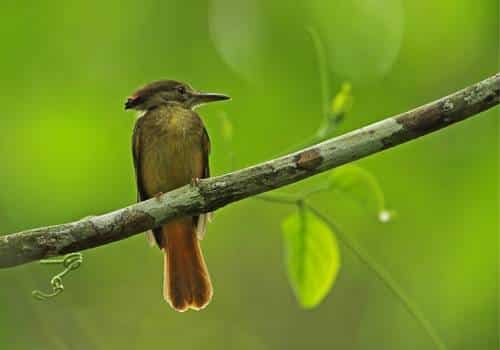
Kingdom: Animalia
Phylum: Chordata
Class: Aves
Order: Passeriformes
Family: Tityridae
Genus: Onychorhynchus
Scientific Name: O. coronatus
Fun Fact: The colorful umbrella-like crest is rarely seen except during mating.
Found in the tropical rainforests of South and Central America, males and females have different colored crests. With males, it’s an impressive bright red shade while females have a more subdued cinnamon shade. This bird is truly majestic, despite its small size. Not only does it have a loud and clear song, it also is a very precise flier. It can swiftly change direction in midair and catch insects while flying.
Amberjack
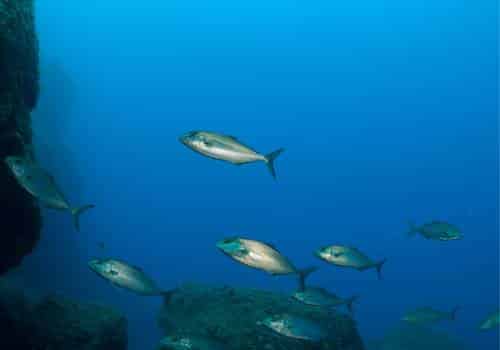
Kingdom: Animalia
Phylum: Chordata
Class: Actinopterygii
Order: Perciformes
Family: Carangidae
Genus: Seriola
Scientific Name: Seriola
Fun Fact: Have the same golden-yellow color as the amber gemstone.
These game fish are powerful and quick swimmers and can easily reach speeds of 30 mph. This makes them one of the swiftest fish in the ocean. They often fight back against anglers and are coveted fish for this reason. These fish prefer warm waters like the Gulf of Mexico or the Mediterranean Sea and don’t do as well in cold water. They’re the type of fish used to make fish tacos.
Ambrosia Beetle

Kingdom: Animalia
Phylum: Arthropoda
Class: Insecta
Order: Coleoptera
Fun Fact: Some species can fertilize eggs without a male.
Ambrosia beetles are known for living in symbiosis with ambrosia fungus. They’re quite small in size for woodboring beetles and they mostly attack dead trees or distressed trees. Sapwood and/or heartwood happens to be one of their favorites. A few species of ambrosia beetles might attack healthy trees. They dig tunnels inside their favored trees and then release the fungal symbiont. They’re found all over the world but are mostly concentrated in the tropics.
American Alligator
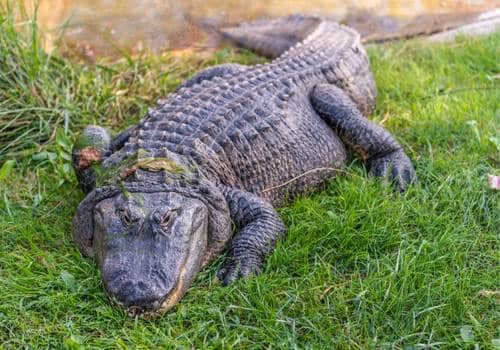
Kingdom: Animalia
Phylum: Chordata
Class: Reptilia
Order: Crocodilia
Family: Alligatoridae
Genus: Alligator
Scientific Name: A. mississippiensis
Fun Fact: Lure birds to them by balancing sticks and branches on their heads.
One of the most ancient kinds of creatures in the world, alligators are apex predators but will also eat fruits and berries. They can run pretty fast given their ungainly stature and have two different kinds of walks – the high walk with their bellies off the ground and the low walk with their legs sprawled. They’re usually found in southeastern United States and northeastern Mexico and are the larger of the two alligator species.
American Alsatian
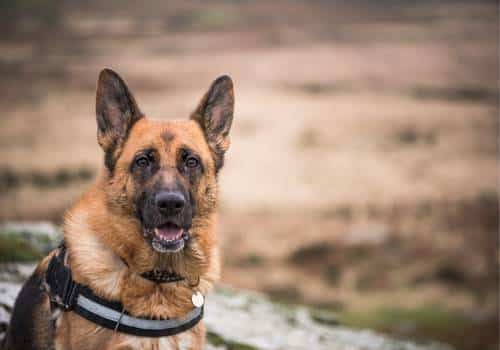
Kingdom: Animalia
Phylum: Chordata
Class: Mammalia
Order: Carnivora
Family: Canidae
Genus: Canis
Scientific Name: C. lupus familiaris
Fun Fact: Bred to resemble the extinct dire wolf
Not a very well-known breed, these purebred dogs are large but very gentle. Even though they’re considered purebreeds now, they’re a fifth generation cross-breed and were bred very deliberately to look exactly like they do. They were bred to look like the dire wolf, which was a close cousin of the modern grey wolf but went extinct a long time ago. They’ve got all kinds of breeds in them, from the German shepherd and malamute to the English mastiff and Great Pyrenees.
American Bulldog

Kingdom: Animalia
Phylum: Chordata
Class: Mammalia
Order: Carnivora
Family: Canidae
Genus: Canis
Scientific Name: C. lupus familiaris
Fun Fact: 49 American universities have a bulldog mascot.
Having gotten their name from the sport of bull-baiting, they’re supposed to be extremely stubborn and ferocious by nature. However, these dogs actually make for great family pets since they can often be very laidback and friendly. With their wrinkled skin and the way they slobber over everything, they’re very cute. However, they had quite brutal origins. They’re absolutely fearless and have large powerful heads which made them great fighting dogs.
American Bully

Kingdom: Animalia
Phylum: Chordata
Class: Mammalia
Order: Carnivora
Family: Canidae
Genus: Canis
Scientific Name: C. lupus familiaris
Fun Fact: Come in three sizes – pocket, standard and giant.
American bullies, despite their name, tend to be friendly and lovable dogs. They are a mix of American pitbulls terriers, American Staffordshire terriers and other pitbulls. Originally bred to cull out the aggressiveness that marks pitbulls, they’re gentle with children and make loyal companions. They look like pitbulls which give them a bad rep to people who don’t know better. With their wrinkled faces and muscular bodies, they aren’t the prettiest to look at but their appearance belies their friendliness.
American Cocker Spaniel

Kingdom: Animalia
Phylum: Chordata
Class: Mammalia
Order: Carnivora
Family: Canidae
Genus: Canis
Scientific Name: C. lupus familiaris
Fun Fact: Probably came to North America on the famous Mayflower.
These sporting dogs were only recognized by the American Kennel Club in 1878 despite having been around since 1620. Spaniels as a whole probably originated from Spain while the name cocker is supposed to refer to their ability to hunt woodcock. Owned by presidents and celebrities alike (Richard Nixon, Oprah Winfrey and George Clooney), they’re calm dogs without being timid. The UK and US breeds are different.
American Cockroach

Kingdom: Animalia
Phylum: Arthropoda
Class: Insecta
Order: Blattodea
Family: Blattidae
Genus: Periplaneta
Scientific Name: P. americana
Fun Fact: Can live for a week without a head.
Despite the name, American cockroaches didn’t actually originate in America. In fact, they’re native to Africa and the middle east and were only introduced in America in the 17th century. They travelled on ships, including slave ships, and were known as the ship cockroach for this reason. They can hold their breaths for up to 30 minutes and they can’t climb super smooth surfaces because they use small thorn-like appendages to grip the wall or ceiling while climbing.
American Coonhound
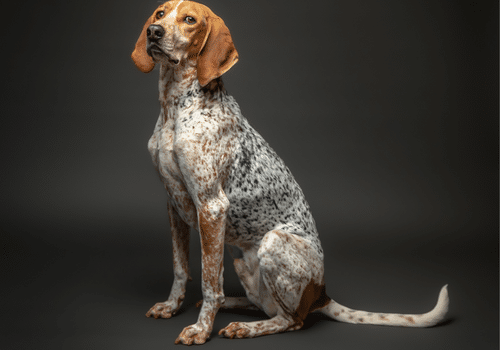
Kingdom: Animalia
Phylum: Chordata
Class: Mammalia
Order: Carnivora
Family: Canidae
Genus: Canis
Scientific Name: C. lupus familiaris
Fun Fact: Trained as treeing hounds, they can track their prey even when the latter escape up trees.
An American type of hunting dog, bred to hunt raccoons, American coonhounds are scent hounds. There are actually six different breeds that fall within the category although they’re all colloquially referred to as coons. The six breeds are the black and tan, the redbone, the American English, bluetick, treeing walker and Plott hound. Other than the first, the American Kennel Club didn’t recognize any of the others until the 2000s.
American Dog Tick
Kingdom: Animalia
Phylum: Arthropoda
Class: Arachnida
Order: Ixodida
Family: Ixodidae
Genus: Dermacentor
Scientific Name: D. variabilis
Fun Fact: Carry Rocky Mountain spotted fever and tularemia.
Despite the name, the American dog tick can affect a lot of animals other than just dogs (humans included). However, they’re named that because the adults prefer feeding on dogs. Found throughout the continent of North America, they’re usually active during the spring. The high temperatures of summer and the low humidity of winter put a stop to their activities.
American Eel
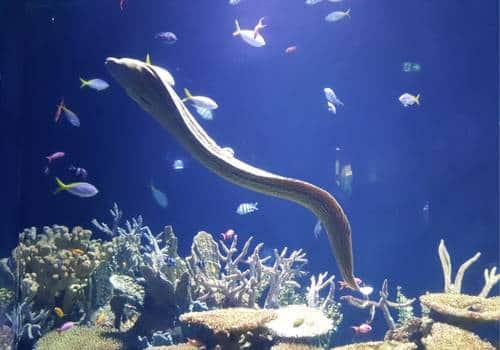
Kingdom: Animalia
Phylum: Chordata
Class: Actinopterygii
Order: Anguilliformes
Family: Anguillidae
Genus: Anguilla
Scientific Name: A. rostrata
Fun Fact: Change colors to match their surroundings.
Despite the snake-like looks of the eel, you shouldn’t be fooled by them. These creatures are actually fish. They’re freshwater fish but they migrate to the Atlantic Ocean, to the Sargasso Sea, to lay their eggs in saltwater. American eels usually hunt at night and spend the days hiding in mud, gravel or sand close to shore. They can be as long as 4 feet (1.22 m) in length.
American Eskimo Dog

Kingdom: Animalia
Phylum: Chordata
Class: Mammalia
Order: Carnivora
Family: Canidae
Genus: Canis
Scientific Name: C. lupus familiaris
Fun Fact: They might come in ‘biscuit’ color.
Despite the name, these dogs were German in origin and belonged to the Spitz group. The name change was because of anti-German feelings during the First World War. Usually pure white dogs, these dogs bear a strong resemblance to other breeds like the Japanese Spitz, Indian Spitz and Samoyeds. Usually serving as companion dogs or watchdogs, they also became quite popular as circus performers at one point. They have thick, straight fur. Sometimes referred to as Eskies, an Eskie was the first dog to walk on a tightrope.
American Foxhound

Kingdom: Animalia
Phylum: Chordata
Class: Mammalia
Order: Carnivora
Family: Canidae
Genus: Canis
Scientific Name: C. lupus familiaris
Fun Fact: George Washington owned many of these dogs.
With their long, muscular bodies and strong shoulders, American foxhounds are big dogs that can weigh upto 70 lb. Their hair is medium length and fine and they’ve got long droopy ears. Bred to chase foxes but not kill them, they’re active dogs and need quite a lot of exercise. They have large eyes that have often been described as soft and pleading and they aren’t scared of horses since they’ve historically worked alongside them.
American Hairless Terrier
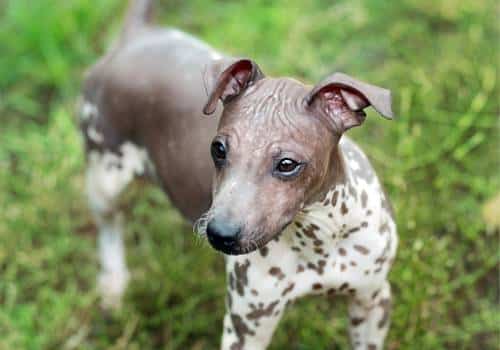
Kingdom: Animalia
Phylum: Chordata
Class: Mammalia
Order: Carnivora
Family: Canidae
Genus: Canis
Scientific Name: C. lupus familiaris
Fun Fact: Puppies are actually born with a coat which gradually fades away.
Directly descended from the rat terrier, which was bred to hunt rats and mice, the hairless terrier is a small to medium sized dog. They’re actually completely bald, just like their name suggests. In some cases, they might have whiskers and eyebrows but that’s about it. They’ve got hunting instincts but aren’t suited to it because of their lack of hair. They’re quite happy being lap dogs but they do need some playtime and regular walks.
American Leopard Hound
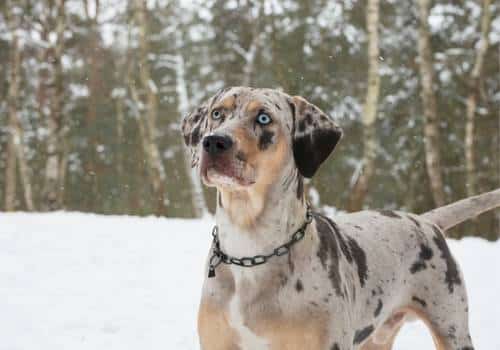
Kingdom: Animalia
Phylum: Chordata
Class: Mammalia
Order: Carnivora
Family: Canidae
Genus: Canis
Scientific Name: C. lupus familiaris
Fun Fact: Known for their intelligence and trainability
They’re quite a distinctive breed because of their striking coat pattern. Coming in all colors and sizes of spots, these hounds have the markings of a leopard and that’s where their name comes from. Like other hounds, they’re intelligent hunting dogs and you can train them to learn all kinds of dog sports and games. They’re excellent swimmers and have a very high prey drive but they’ve become very valued as loyal family dogs in recent years.
American Paddlefish

Kingdom: Animalia
Phylum: Chordata
Class: Actinopterygii
Order: Acipenseriformes
Family: Polyodontidae
Genus: Polyodon
Scientific Name: P. spathula
Fun Fact: Species is older than dinosaurs
Some of the longest living freshwater fish in the world, they’re closely related to sturgeons. They’re a very primitive group and are officially the oldest species of animal found in North America. Fossil records show that paddlefish date back to 125 million years ago. They can reach large sizes and are sometimes called freshwater sharks but they aren’t closely related to sharks. They have a big dorsal fin and a long shark-like body which contributes to the confusion.
American Pit Bull Terrier

Kingdom: Animalia
Phylum: Chordata
Class: Mammalia
Order: Carnivora
Family: Canidae
Genus: Canis
Scientific Name: C. lupus familiaris
Fun Fact: Both Teddy Roosevelt and Woodrow Wilson owned pitbull terriers.
With extremely keen noses, American pitbull terriers often serve as police or customs dogs to sniff out bombs or drugs. They are also used as therapy dogs and search and rescue dogs. This is because they’re very loyal, affectionate companions for humans. While pitbulls often get a bad rep because people think they’re aggressive, most pitbulls weren’t bred as hunting dogs. They were bred as family dogs and to live on farms which is why they’re intensely attached and loving animals.
American Pugabull

Kingdom: Animalia
Phylum: Chordata
Class: Mammalia
Order: Carnivora
Family: Canidae
Genus: Canis
Scientific Name: C. lupus familiaris
Fun Fact: Also called bull pugs at times.
Their name may sound funny but it’s because they’re a crossbreed of two kinds of dogs – the American bulldog and the pug. They’re loyal and playful dogs while being protective at the same time. Thus, they make for great family dogs. You might find these dogs in animal shelters because they’re a designer breed that isn’t strictly recognized. They’re alert animals and wary of strangers so it’s important to socialize them at a young age.
American Pygmy Goat
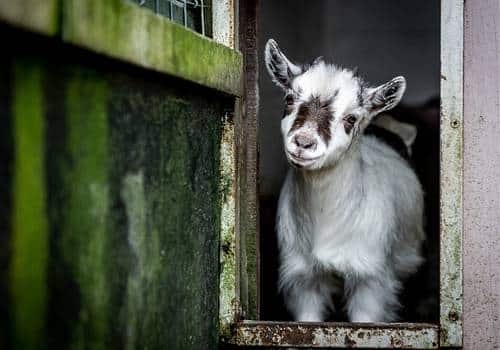
Kingdom: Animalia
Phylum: Chordata
Class: Mammalia
Order: Artiodactyla
Family: Bovidae
Genus: Capra
Scientific Name: C. aegagrus hircus
Fun Fact: Raised as companion animals and pets.
Imported to North America in the middle of the 1900s from German zoos, these dwarf goats actually originated in West Africa. Their purpose was to be kept in zoos and to be used for research in the US. For all their small size, they’re tough, sturdy, broad animals and aren’t delicate in nature. They’re no more than 20 inches tall and come in a variety of colors.
American Robin

Kingdom: Animalia
Phylum: Chordata
Class: Aves
Order: Passeriformes
Family: Turdidae
Genus: Turdus Linnaeus
Scientific Name: T. migratorius
Fun Fact: Can raise as many as three broods in a single season.
One of the most common birds found in North America, these songbirds have a distinctive call that won’t fail to cheer you up. Named after the European robin because of the similarity in looks, the American robin has a reddish-orange breast. But actually they belong to the thrush family. They’re often considered the first signs of the arrival of spring but not all of them are migratory in nature.
American Staffordshire Terrier

Kingdom: Animalia
Phylum: Chordata
Class: Mammalia
Order: Carnivora
Family: Canidae
Genus: Canis
Scientific Name: C. lupus familiaris
Fun Fact: Have appeared in numerous films and TV shows.
Called AmStaffs in everyday parlance, they come from a variety of different lineages – mastiffs, bulldogs and terriers. The most famous AmStaff was probably Stubby, who served during World War I and even became a sergeant for capturing a German spy on a battlefield. These dogs crave love and affection and need to be at the center of the family. They don’t do well when left to their own devices. They’ve got a long history of being family dogs, going all the way back to the European settlers.
American Toad
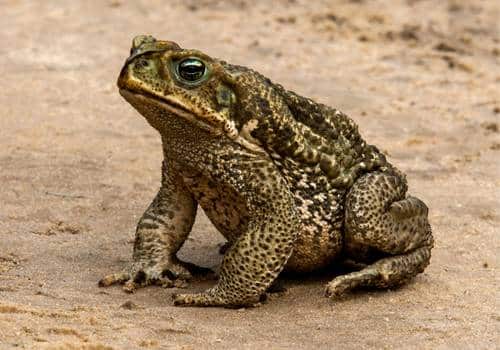
Kingdom: Animalia
Phylum: Chordata
Class: Amphibia
Order: Anura
Family: Bufonidae
Genus: Anaxyrus
Scientific Name: A. americanus
Fun Fact: Good for gardens since they eat many pests that bother plants.
Found throughout Canada and the eastern states of the United States, these medium sized toads tend to remain in an area once they find a territory they prefer. They also show the tendency of coming back to the exact same spot to breed every time. They hibernate during the winter, digging backwards and burying themselves in dirt in the same place as their summer homes. They can be either solid in color or speckled.
American Water Spaniel
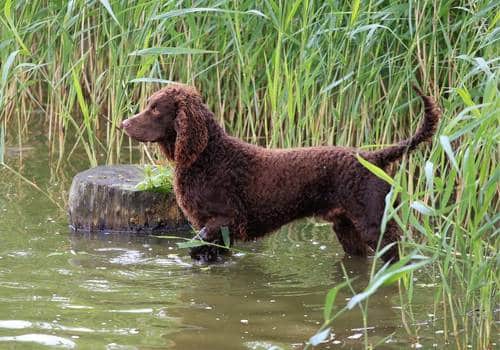
Kingdom: Animalia
Phylum: Chordata
Class: Mammalia
Order: Carnivora
Family: Canidae
Genus: Canis
Scientific Name: C. lupus familiaris
Fun Fact: Originally called Curly Pfeifer
Originally bred as retriever dogs to retrieve waterfowl from water and boats, they were of immense help to hunters. Due to their small size, they could easily fit inside the boat as well. This rare breed has extremely curly fur and are descended from a mish-mash of different breeds – the Curly Coated Retriever, the Field Spaniel, the Irish Water Spaniel and the extinct Old English Water Spaniel.
American Wirehair

Kingdom: Animalia
Phylum: Chordata
Class: Mammalia
Order: Carnivora
Family: Felidae
Genus: Felis
Scientific Name: F. catus
Fun Fact: They love birdwatching and are very patient.
Heavily muscled and powerful, these cats are very strong despite being just a medium sized cat. In fact, you’ll find them heavy to lift up because of their heavy bones. They’re very independent and don’t need a lot of attention even though they’re attached to the members of the family. Related closely to American shorthairs, this isn’t a very old breed. It probably just dates back to the 1960s.
Amethystine Python (Scrub Python)
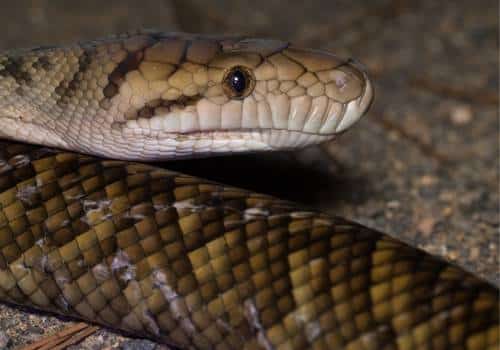
Kingdom: Animalia
Phylum: Chordata
Class: Reptilia
Order: Squamata
Family: Pythonidae
Genus: Simalia
Scientific Name: S. amethistina
Fun Fact: Largest snake found in Papua New Guinea.
Native to Indonesia and Papua New Guinea, these pythons are some of the largest snakes in the world. They might measure as much as 18 feet or 5.5 m in length and weigh about 66 lb (30 kg). Until recently, this species was mistaken with the Australian scrub python so it was classified as the largest snake in Australia. This isn’t true since it doesn’t actually exist in Australia. It has a milky sheen to its scales which is what gives it its name since it resembles an amethyst.
Amphicoelias Fragillimus
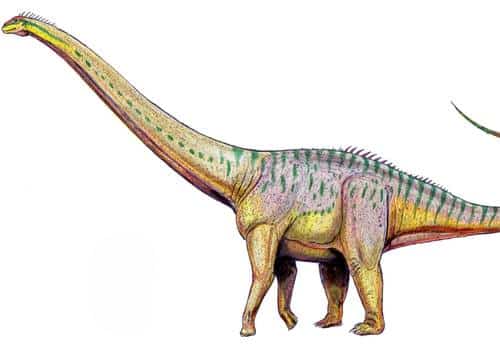
Kingdom: Animalia
Phylum: Chordata
Order: Sauropoda
Family: Diplodocoidea
Genus: Amphicoelia
Scientific Name: A. Fragillimus
Fun Fact: Discovered in the same quarry as the Camarasaurus.
Also called the Maraapunisaurus, this species of sauropod dinosaur may just have been the largest dinosaur specimen ever recovered. However, we don’t know much about this dinosaur because the only fossil that was recovered disappeared almost immediately afterwards. Any attempt to find it has ended in failure. Found in Colorado, it was called Maraapunisaurus after the Southern Ute word “Ma-ra-pu-ni” which means “huge”.
Amur Leopard
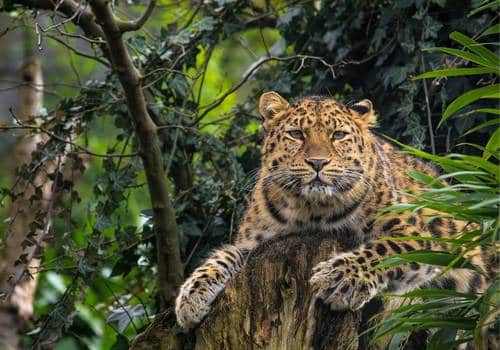
Kingdom: Animalia
Phylum: Chordata
Class: Mammalia
Order: Carnivora
Family: Felidae
Genus: Panthera
Scientific Name: P. pardus orientalis
Fun Fact: Rarest big cats in the world.
With just over a hundred individuals existing in the world, all found along the Russia-China border, Amur leopards are small by leopard standards. Their numbers seem to be on the rise in recent years but they’re still a critically endangered species. Nocturnal and solitary animals by nature, the Amur leopard is usually photographed by infrared camera traps. They grow different coats in summers and winters according to the temperature.
Anaconda

Kingdom: Animalia
Phylum: Chordata
Class: Reptilia
Order: Squamata
Family: Boidae
Genus: Eunectes
Fun Fact: They have five living species and one extinct one.
Found only in tropical South America, these snakes are semi-aquatic. The green anaconda is considered to be one of the largest snakes in the world, reaching lengths of 21 feet and weighing up to 176 lb or 80 kg for the typical adult. Anacondas are good swimmers and they prey on aquatic animals like fish, waterfowl and caiman. Sometimes, they might prey on goats or even jaguars that venture too close to the water. Their name, interestingly, is probably of Sri Lankan origin and might mean either “elephant killer” or “large trunk”.
Anatolian Shepherd Dog
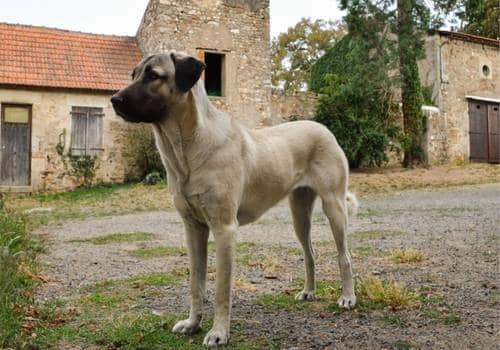
Kingdom: Animalia
Phylum: Chordata
Class: Mammalia
Order: Carnivora
Family: Canidae
Genus: Canis
Scientific Name: C. lupus familiaris
Fun Fact: Can hunt and feed themselves and aren’t dependent on humans.
This ancient dog breed might well date back to 2000 BCE since there are descriptions of them in old literature. Native to Turkey, they were livestock guardians and weren’t exported out of Turkey until very recently. They were too valuable to the Turkish people. In the 1950s, American ranchers began to import some of these dogs but they’re still a relatively unknown breed. In the US, they’re used to guard livestock against endangered predators to reduce risk to all parties concerned.
Anchovies
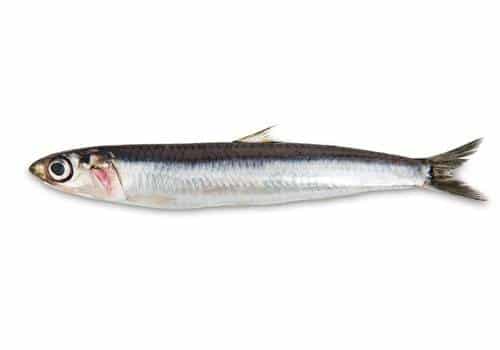
Kingdom: Animalia
Phylum: Chordata
Class: Actinopterygii
Order: Clupeiformes
Family: Engraulidae
Fun Fact: Have 17 genera and more than 140 species.
These short-lived fish are small and oily and extensively used in Mediterranean cuisine. Green fish with a long silver stripe along the caudal fin, these fish have very sharp teeth. They’re eaten by a lot of predatory fish, like coho salmon, chinook and halibuts. They live in saltwater and have a very fishy taste. Most people either like anchovy or can’t stand the taste of it.
Andrewsarchus
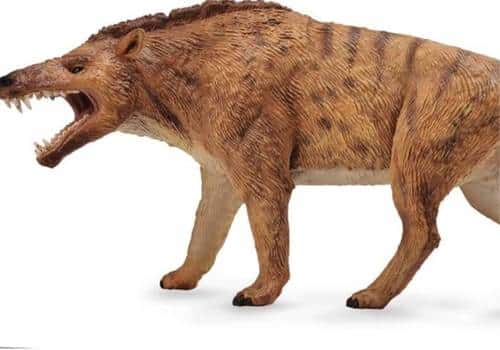
Kingdom: Animalia
Phylum: Chordata
Class: Mammalia
Order: Artiodactyla
Genus: Andrewsarchus
Scientific Name: A. mongoliensis
Fun Fact: Named after Roy Chapman Andrews who led the expedition in which it was discovered.
This extinct genus was an ungulate and is mostly known from one complete skull and a few teeth. People have claimed that it was the largest, terrestrial, carnivorous mammal to ever live. However, this theory is widely debated. Judging from the skull, it’s believed that these animals were 12.5 feet in length and 6.2 feet in height.
Angelfish
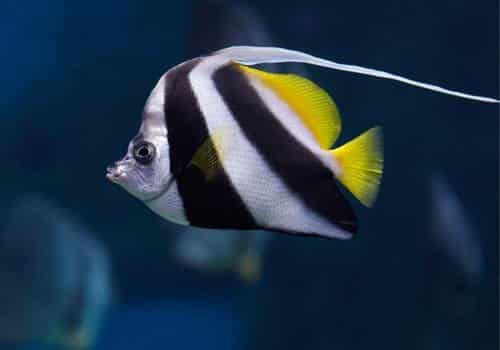
Kingdom: Animalia
Phylum: Chordata
Class: Actinopterygii
Order: Perciformes
Family: Pomacanthidae
Fun Fact: Can be any color of the rainbow.
Named for the elegant way that they move and the delicate appearance of their fins which almost look like wings, the Latin name Pomacanthidae actually means ‘covered in thorns’. This is because they have a hard, spiny growth that they use to defend themselves. They’re omnivorous and widely kept in aquariums because of their pretty appearance. But they’re found in many parts of the world, in both freshwater and seas and oceans.
Angelshark

Kingdom: Animalia
Phylum: Chordata
Class: Chondrichthyes
Order: Squatiniformes
Family: Squatinidae
Genus: Squatina
Fun Fact: They’re critically endangered worldwide.
Also called monkfish, their flattened bodies and wide heads almost give them the appearance of manta rays. These characteristics help them flatten themselves to the seabed and hide in plain sight. Nocturnal ambush predators, there are actually 23 species of angelsharks but squatina squatina is the most well-known. They are sharks even though they don’t have an anal fin and their caudal fin is different from other sharks.
Angled Sunbeam Caterpillar
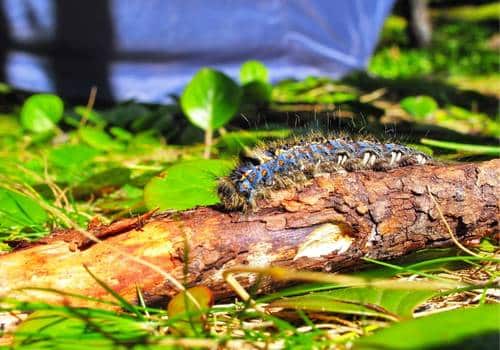
Kingdom: Animalia
Phylum: Arthropoda
Class: Insecta
Order: Lepidoptera
Family: Lycaenidae
Genus: Curetis
Scientific Name: C. acuta
Fun Fact: The butterflies have wings that reflect sunlight and keep them cool.
Measuring around 1 inch in length and being a bright green color, these caterpillars have a strange defense mechanism. They have two thin yellow periscopes near their hind parts that point away from the body. When the caterpillar is scared, these periscopes release a tentacle that telescopes around and scares away predators.
Anglerfish
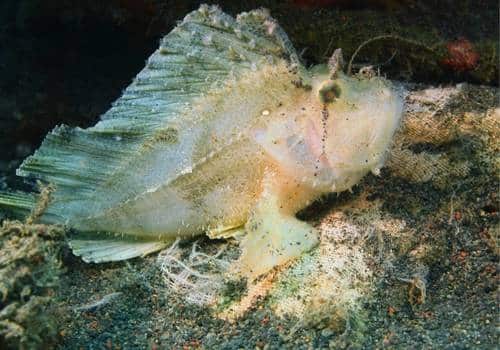
Kingdom: Animalia
Phylum: Chordata
Class: Actinopterygii
Order: Lophiiformes
Fun Fact: They have their own light source.
Bony fish with very large, spiky teeth, anglerfish can look quite scary. They live in the deepest, darkest parts of the ocean where no sunlight can reach. Thus, anglerfish have an interesting appendage on their heads. This glows in the dark because of bioluminiscent bacteria and they use this as their own fishing rod to lure prey in. They’re strictly carnivorous by nature. The males are dependent on the bigger females who are the ones with the lure.
Angora Ferret
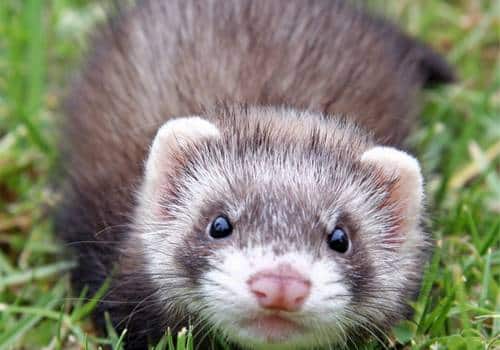
Kingdom: Animalia
Phylum: Chordata
Class: Mammalia
Order: Carnivora
Family: Mustelidae
Genus: Mustela
Scientific Name: M. furo
Fun fact: This species is only three decades old.
A particular type of ferret with very long, silky hair, Angora ferrets were developed in Sweden. And it was completely by accident too. A breeder noticed that some of the ferrets in a Swedish breeding facility had extra long hair on the back legs and the hair was of great quality. Thus, they decided to breed longhaired ferrets with other longhaired ferrets to get more of that kind of offspring. That’s when the Angora ferret became a new breed of ferret.
Angora Goat
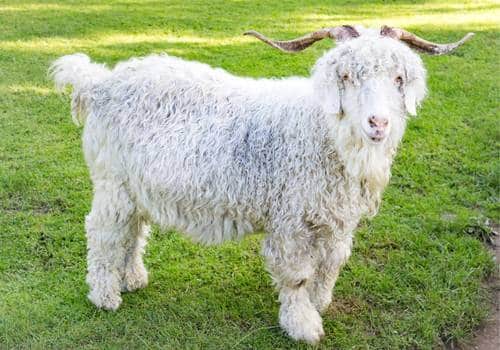
Kingdom: Animalia
Phylum: Chordata
Class: Mammalia
Order: Artiodactyla
Family: Bovidae
Genus: Capra
Scientific Name: C. aegagrus hircus
Fun Fact: Have existed for at least 500 years.
A Turkish breed, these goats produce a luxurious fiber known as mohair. The great thing about this fiber is that it has a natural lustrous sheen and it takes to dye very well. Angora goats can now be found all over the world and one of the major producers of mohair is actually South Africa. These goats are quite small in size and slender as well. They’re entirely covered by long ringlets that are sheared twice a year.
Anhinga
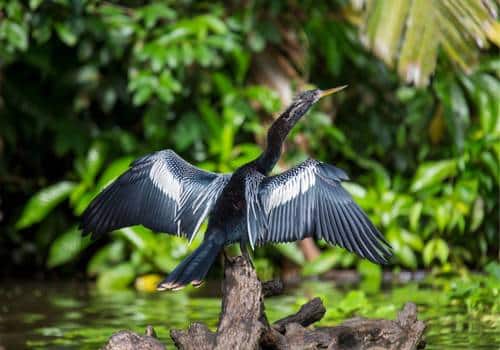
Kingdom: Animalia
Phylum: Chordata
Class: Aves
Order: Suliformes
Family: Anhingidae
Genus: Anhinga
Scientific Name: A. anhinga
Fun Fact: Name means snake bird or devil bird in the Brazilian Tupi language.
This water bird is native to the warmer parts of the Americas and is one of several anhinga species that live in wetlands around the world. With a long, slender, snake-like neck and a slim but sharp beak, these birds hunt fish and other small prey by spearing them. They’re large birds, weighing around 2.7 lb and are a glossy blue-black or green-black in color.
Anna’s Hummingbird
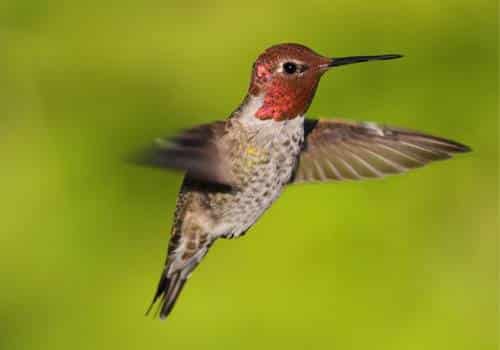
Kingdom: Animalia
Phylum: Chordata
Class: Aves
Order: Apodiformes
Family: Trochilidae
Genus: Calypte
Scientific Name: C. anna
Fun Fact: Earlier only found in parts of California.
Named after the Duchess of Rivoli, Anna Masséna, these birds are found along the western coastal regions of North America. People have transplanted exotic ornamental plants along the Pacific coast and this has enticed the bird to expand its breeding range beyond California. These birds are striking in appearance with a shiny bronze-green back.
Anole Lizard
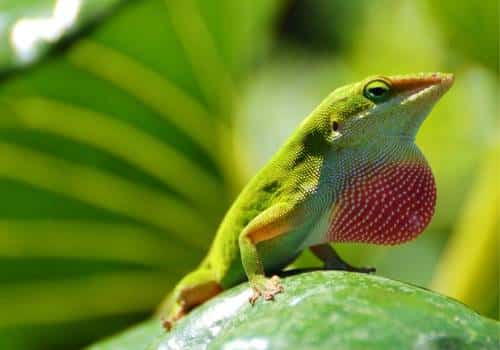
Kingdom: Animalia
Phylum: Chordata
Class: Reptilia
Order: Squamata
Family: Dactyloidae
Genus: Anolis
Fun Fact: Colombia has the most number of anole species.
This family of lizards are native to southeastern USA, Central America and spread all the way down to Paraguay. Typically green or brown in color, some species can change their appearance at will. While they’re similar to geckos in many ways (sharing the same kind of foot structure for climbing and the ability to break off and regrow their tails), they’re only distantly related to the latter. Anoles are fiercely territorial.
Anomalocaris
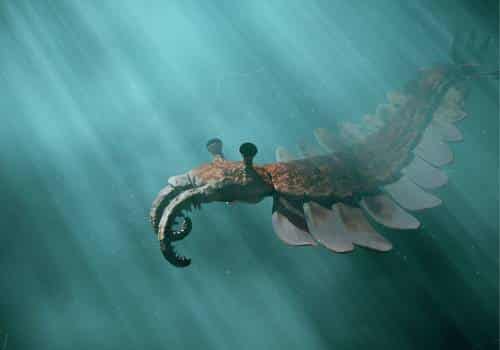
Kingdom: Animalia
Phylum: Arthropoda
Order: Radiodonta
Family: Anomalocarididae
Genus: Anomalocaris
Scientific Name: Anomalocaris
Fun Fact: Had a pair of compound eyes on both sides of their heads.
This extinct shrimp-like creature was a strange looking marine animal which had about 32 overlapping mouth flaps. Scientists are undecided about what this helped the creature with but some theorize that the purpose was to easily crush prey. They’re believed to be a distant cousin of modern arthropods and lived during the Cambrian period when 85 percent of the world was covered in water. Fossils have been found throughout the world although the most famous example is from British Columbia, Canada.
Ant
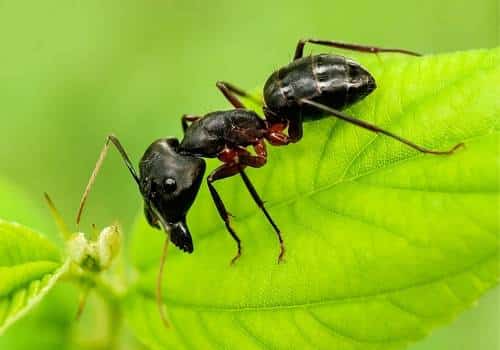
Kingdom: Animalia
Phylum: Arthropoda
Class: Insecta
Order: Hymenoptera
Family: Formicidae
Scientific Name: Formicidae
Fun Fact: Capable of carrying great weight, given their own size.
One of the largest families of insects in the world, ants are believed to have evolved from wasps at some point. They live in colonies presided over by a fertile queen and comprising infertile worker ants and fertile males called drones. Their societies are complex with a proper division of labor and capable of problem solving. In some ways, humans find ants fascinating because of the parallels with our society.
Antarctic Scale Worm
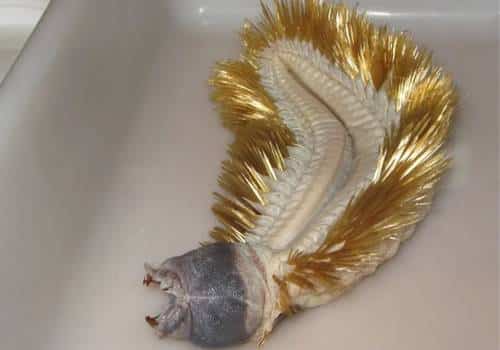
Kingdom: Animalia
Phylum: Annelida
Class: Polychaeta
Order: Phyllodocida
Family: Polynoidae
Genus: Eulagisca
Scientific Name: E. gigantea
Fun Fact: Only found in the deep sea.
Found in the cold waters of the Antarctic Ocean, they’re one of the largest scale worms in the world. They don’t actually have scales but the elytra on their bodies look like scales. They are golden-brown and cream in color. They are capable of swimming but they spend most of their time on the ocean floor. Because of their large size, they struggle to swim for longer periods.
Anteater
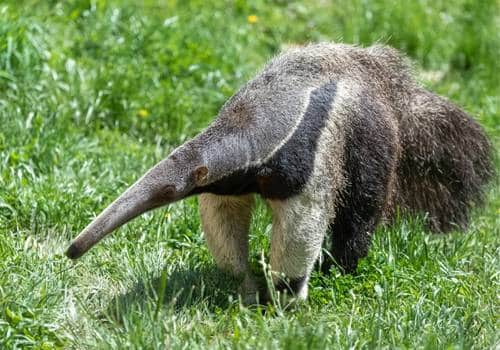
Kingdom: Animalia
Phylum: Chordata
Class: Mammalia
Order: Xenarthra
Family: Myrmecophagidae
Genus: Tamandua
Scientific Name: M. Tridactyla
Fun Fact: Not closely related to aardvarks or pangolins despite their also being called anteaters colloquially.
Anteaters, found ranging from southern Mexico to northern Argentina, survive almost completely on plants and termites. With their distinctive long snouts, they find it easy to forage for insects. They might live in a variety of habitats, from savannahs to wet tropical forests. They’re extremely territorial and solitary by nature and don’t often venture into the territories of other anteaters. Their sight is very bad.
Antelope
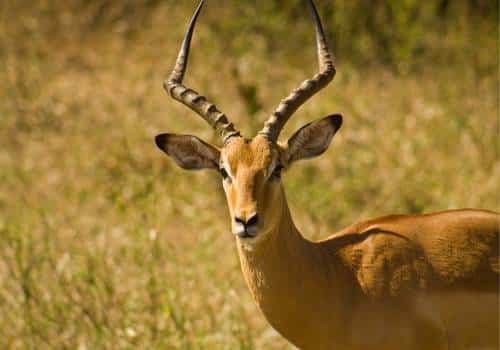
Kingdom: Animalia
Phylum: Chordata
Class: Mammalia
Order: Artiodactyla
Family: Bovidae
Fun Fact: Cannot grow their horns like deer can.
Despite looking like deer, antelopes actually belong to the bovine family along with cows, sheep and goats. Found in Africa, a small area in eastern Europe and parts of Asia – India, central Asia and the middle east, antelope have about 91 species and most of them live in Africa. Antelopes have horns made of bone which they don’t shed or regrow. If broken, they’ll probably remain broken all their lives.
Anteosaurus
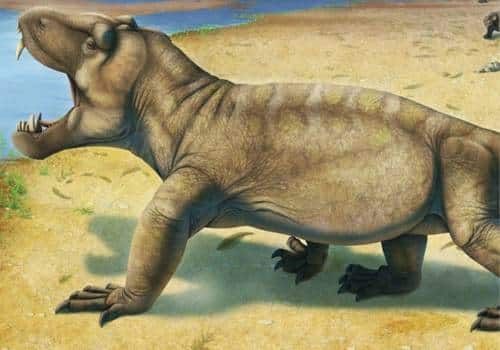
Kingdom: Animalia
Phylum: Chordata
Class: Reptilia
Order: Therapsida
Family: Anteosauridae
Genus: Anteosaurus
Scientific Name: A. magnificus
Fun Fact: Lived 260 million years ago.
Native to what is now South Africa, these extinct carnivores were huge. Measuring around 20 feet in length and weighing a minimum of 1300 lb (600 kg), they were the largest terrestrial predators of their time. Their name might mean “before lizard” or “primitive lizard” but might just as well refer to the giant Antaois from Greek mythology.
Antiguan Racer Snake
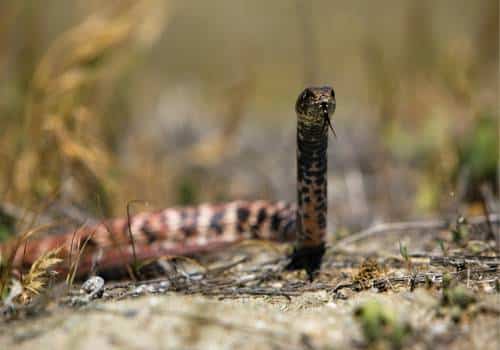
Kingdom: Animalia
Phylum: Chordata
Class: Reptilia
Order: Squamata
Family: Colubridae
Genus: Alsophis
Scientific Name: A. antiguae
Fun Fact: The world’s rarest snake.
This non-poisonous, grey-brown snake almost went extinct in the 1990s. In 1995, they were only found on Great Bird Island off the coast of Antigua and were just about 51 in number. They were widely hunted by predators like mongoose (originally introduced on the island to kill rats but preying on the racers instead). However, there’s been a recent comeback after the non-native mongoose were eradicated. Now there are over 1000 individuals.
Aoudad Sheep
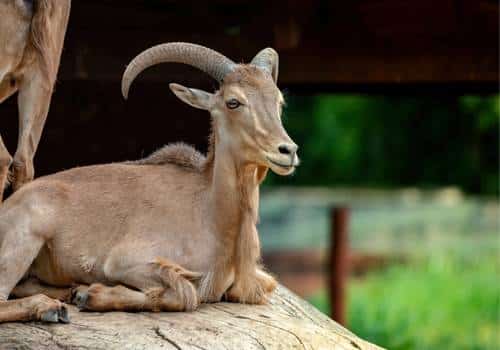
Kingdom: Animalia
Phylum: Chordata
Class: Mammalia
Order: Artiodactyla
Family: Bovidae
Genus: Ammotragus
Scientific Name: A. lervia
Fun Fact: Can survive solely on the water they obtain from food.
Also called Barbary sheep, this species is native to North Africa but has been introduced to North America and parts of Europe. Sandy brown in color with a lighter belly and a dark line along the back, these sheep usually darken with age. They have long horns that usually curve backward. They’re usually found around the barren center of the Sahara Desert and arid mountainous areas and are very good agile climbers.
Ape

Kingdom: Animalia
Phylum: Chordata
Class: Mammalia
Order: Primates
Family: Hominidae
Scientific Name: Hominoidea
Fun Fact: A catch-all term that refers to gibbons, gorillas, chimpanzees and humans alike.
There exist two groups of apes, the lesser apes which include gibbons and the greater apes which include orangutans, gorillas, bonobos, chimpanzees and humans. They’re different from monkeys, which are considered their cousins of sorts. Originating in sub-Saharan Africa and Southeast Asia, all species of apes except humans are considered threatened and near extinction. They’re usually very agile climbers and they don’t have tails (unlike monkeys).
Apennine Wolf

Kingdom: Animalia
Phylum: Chordata
Class: Mammalia
Order: Carnivora
Family: Canidae
Genus: Canis
Scientific Name: C. lupus italicus
Fun Fact: Is actually different from the European wolf.
Numbering just about 3000 in the world, Apennine wolves or Italian wolves are distinct in that the structure of their skull is slightly different from the European grey wolf. The population almost went extinct in the 1970s when their numbers fell below 100 and they have been a protected group ever since. In an unofficial capacity, it’s considered the national animal of Italy.
Aphid
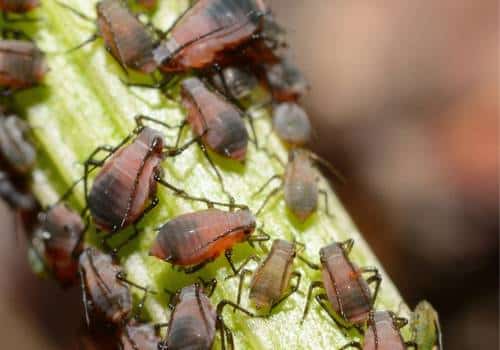
Kingdom: Animalia
Phylum: Arthropoda
Class: Insecta
Order: Hemiptera
Family: Aphidoidea
Fun Fact: Most destructive insect pests for cultivated plants in temperate areas.
Probably containing over 5000 species, they’re colloquially called greenfly or blackfly. But their color can vary vastly according to the species. Considered a nuisance by gardeners, they feed on all kinds of fruit and fiber plants. In fact, most species of aphid are monophagous, which means that they feed only on one plant species. However, around 10 percent of aphids feed on multiple plant species.
Appenzeller Dog
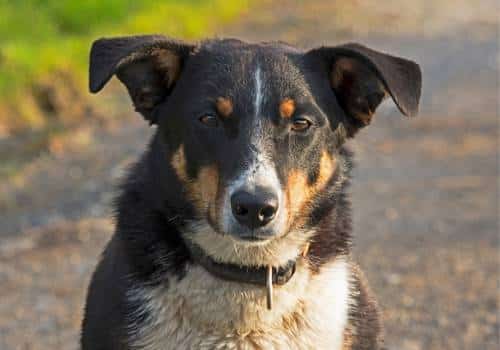
Kingdom: Animalia
Phylum: Chordata
Class: Mammalia
Order: Carnivora
Family: Canidae
Genus: Canis
Scientific Name: C. lupus familiaris
Fun Fact: They’re big shedders because of their double coats.
One of four Swiss mountain dog breeds, these working dogs are extremely lively, loyal and intelligent. They were historically used for a multitude of tasks, from herding to guarding livestock to pulling carts. Thus, they’re a highly trainable species but also make devoted family dogs. Typically having tricolor coats of black, white and rust, these dogs are double-coated and protected from harsh weather.
Apple Head Chihuahua

Kingdom: Animalia
Phylum: Chordata
Class: Mammalia
Order: Carnivora
Family: Canidae
Genus: Canis
Scientific Name: C. lupus familiaris
Fun Fact: Often have protruding eyes because of the domed shape of their heads.
Smaller than the other kind of chihuahua, known as the deer headed chihuahua, they’re just about 2 – 6 lb in weight and 5 – 9 inches in height. They aren’t as well known as their long-headed cousins. A concerning fact about these dogs? Most of them are born with moleras – a small soft spot on top of their heads where the cranium hasn’t fully closed up yet. The moleras usually close up in adults but you need to be especially careful with baby chihuahuas.
Apple Moth
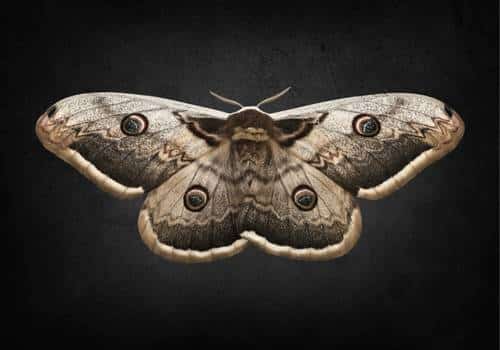
Kingdom: Animalia
Phylum: Arthropoda
Class: Insecta
Order: Lepidoptera
Family: Tortricidae
Genus: Epiphyas
Scientific Name: E. Postvittana
Fun Fact: The females are bigger than the males.
These kinds of leafroller moths are native to Australia but have been now introduced in other places like New Zealand, Hawaii and the British Isles. In fact, an apple moth was identified in California in 2007 although no one is sure how it got there. They’re considered pests in Australia and New Zealand now because they feed on horticultural crops and have few natural predators.
Arabian Cobra
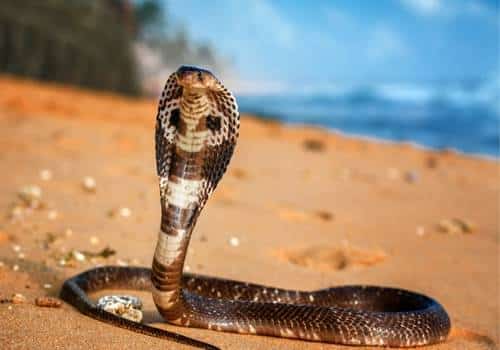
Kingdom: Animalia
Phylum: Chordata
Class: Reptilia
Order: Squamata
Family: Elapidae
Genus: Naja
Scientific Name: N. arabica
Fun Fact: A sacred creature in some cultures and believed to have protective powers.
One of the most poisonous snakes in the world, the Arabian cobra has neurotoxins in their venom that affects the nervous system and can cause respiratory failure and paralysis. Found in the Arabian Peninsula, they can reach 2.2 meters in length and are fond of harsh desert climates. They mostly feed on small mammals and birds.
Arabian Wolf
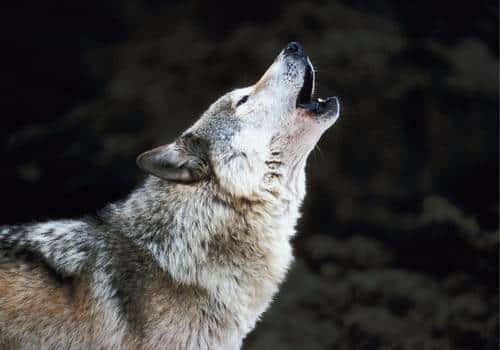
Kingdom: Animalia
Phylum: Chordata
Class: Mammalia
Order: Carnivora
Family: Canidae
Genus: Canis
Scientific Name: C. lupus arabs
Fun Fact: Dig holes and bury themselves in sand in the middle of the day to stay cool.
One of the smallest subspecies of wolves in the world, most stand at just about 25 inches at the shoulder and weigh 45 lb. At one point of time, they were widely distributed but now they’re only found in some small regions of West Asia. Not very well known, they have thin fur in order to survive the hot climates of the Arabian dunes but very keen and large ears in comparison to northern wolves.
Arafura File Snake
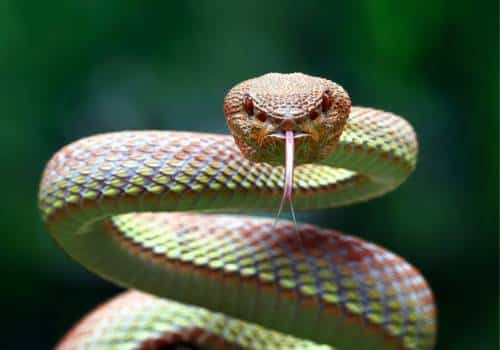
Kingdom: Animalia
Phylum: Chordata
Class: Reptilia
Order: Squamata
Family: Acrochordidae
Genus: Acrochordus
Scientific Name: A. arafurae
Fun Fact: Live in backwater lagoons and pools.
These non-venomous snakes, native to northern Australia and New Guinea, are nocturnal and aquatic. They’re usually very docile and might move around a lot seasonally, trying to find habitats they prefer. Other than lakes and pools, they also like mangrove forests and flooded grasslands. Females are usually bigger than males, reaching a maximum length of 2.5 meters.
Arambourgiania
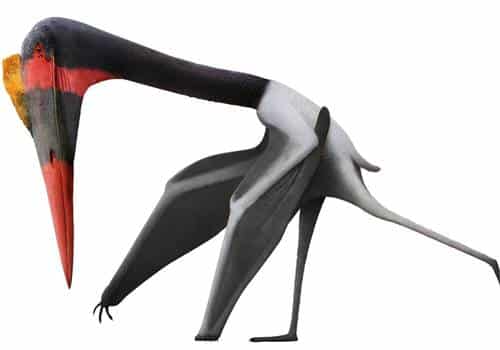
Kingdom: Animalia
Phylum: Chordata
Order: Pterosauria
Family: Azhdarchidae
Genus: Arambourgiania
Species: A. philadelphiae
Fun Fact: The first discovery was made by a railway worker.
This extinct genus of pterosaur was probably one of the largest flying creatures in the history of the world. The first fossil was discovered in Jordan in the 1940s. A very incomplete skeleton has been found, consisting of some vertebrae and bones from the wing. Thus, we only have a hazy idea of what they looked like. They probably had long storklike necks and beaks.
Arapaima
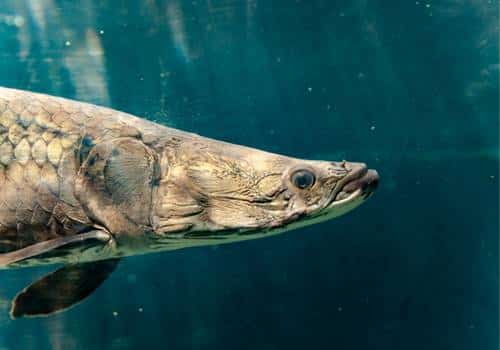
Kingdom: Animalia
Phylum: Chordata
Class: Actinopterygii
Order: Osteoglossiformes
Family: Arapaimidae
Genus: Arapaima
Fun Fact: Adults carry their broods in their mouths till they’re older and capable of protecting themselves.
Among the largest freshwater fish in the world, the arapaima breathe in air from the surface and don’t make much use of gills, though they have them. They can be 15 inches long and as much as 440 lb in weight. Native to the Amazon and Essequibo basins in South America, they’re now cultivated all over the world.
Archaeoindris
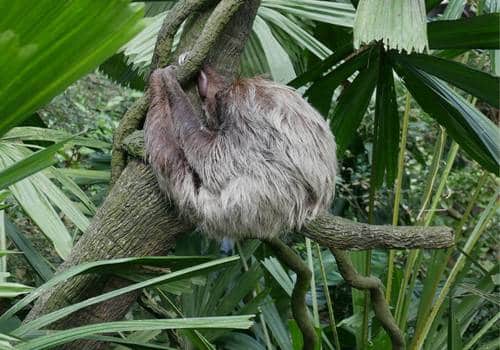
Kingdom: Animalia
Phylum: Chordata
Class: Mammalia
Order: Primates
Family: Palaeopropithecidae
Genus: Archaeoindris
Scientific Name: A. Fontoynontii
Fun Fact: First identified in 1909.
An extinct giant lemur, this was the largest primate species we know to have evolved in Madagascar. Fossil remains show they would probably have been the size of a male gorilla. Belonging to a family known as sloth lemurs, they’re quite closely related to several living species of lemur. Their extinction seems to have been relatively recent, only 350 BCE. But we don’t know much about them since very few fossils have been found.
Archaeopteryx
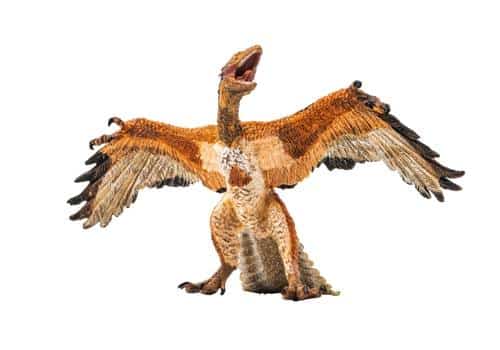
Kingdom: Animalia
Phylum: Chordata
Family: Archaeopterygidae
Genus: Archaeopteryx
Scientific Name: A. lithographica
Fun Fact: It was only the size of a pigeon.
Found mostly in Germany and Spain, this species has confused scientists all over the world. No one can be quite sure whether they were dinosaurs or birds. Even though they technically had feathers, a wishbone and a bird-like beak, they also had teeth, a reptilian tail and three claws in the middle of each wing. Thus, they’re sometimes hailed as a transitional form between dinosaurs and birds.
Archaeotherium
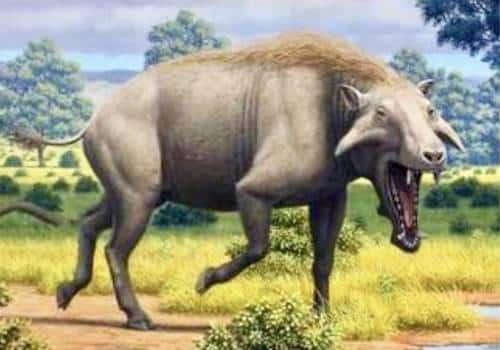
Kingdom: Animalia
Phylum: Chordata
Class: Mammalia
Order: Artiodactyla
Family: Entelodontidae
Genus: Archaeotherium
Scientific Name: A. mortoni
Fun Fact: Probably got into a lot of fights with each other.
An extinct species that lived alongside early horses and rhinos in North America, they belonged to the same order that includes modern day cattle and deer. But fossil records indicate that the creature may have been an omnivore with tusk-like canines. Mistakenly associated with modern pigs, the archaeotherium is actually more closely related to whales and hippos.
Archelon Turtle
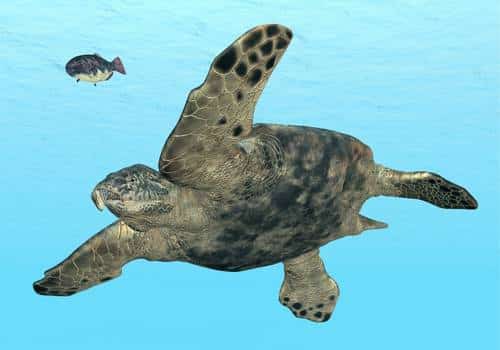
Kingdom: Animalia
Phylum: Chordata
Class: Reptilia
Order: Testudines
Family: Protostegidae
Genus: Archelon
Species: A. ischyros
Fun Fact: The largest specimen is named Brigitta.
They lived about 65 to 75 millions years ago and probably ate the same kind of things that sea turtles eat today – crustaceans and jellyfish. They mostly lived on the surface of oceans and not in the depths. The largest turtle to have ever been discovered, the biggest specimen was 15 feet or 4.6 m in length. Despite the similarities, scientists now believe that the Archelon doesn’t share any marine ancestors with modern sea turtles.
Archerfish
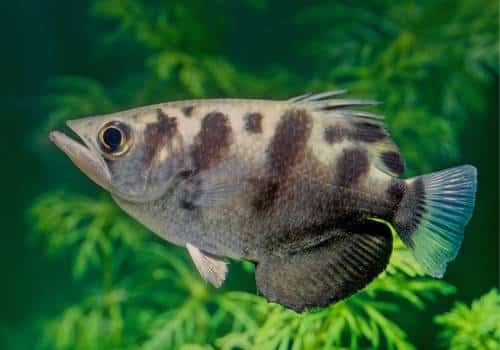
Kingdom: Animalia
Phylum: Chordata
Class: Actinopterygii
Order: Perciformes
Family: Toxotidae
Genus: Toxotes
Scientific Name: Labrus jaculator
Fun Fact: Can shoot jets of water upto five feet.
Nicknamed spitting sharpshooters, they have mouths like squirt guns. They use jets of water to shoot down insects from above the surface. The kind of precision and accuracy needed for this is remarkable. Their eyesight is very good and the eyes face forward rather than sideways which gives them a kind of binocular vision.
Arctic Char
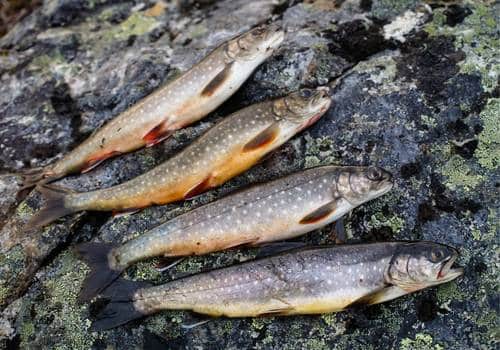
Kingdom: Animalia
Phylum: Chordata
Class: Actinopterygii
Order: Salmoniformes
Family: Salmonidae
Genus: Salvelinus
Scientific Name: S. alpinus
Fun Fact: Name comes from Old Irish and means “red” or “blood”.
A coldwater fish family, they can be found in alpine lakes in addition to the Arctic and subarctic coastal waters. They’re closely related to both salmon and lake trout and are fished quite extensively, especially in the Nordic countries. Coming intwo distinct sizes, giant and dwarf, Arctic char can measure around 3 inches or 16 inches in length.
Arctic Fox
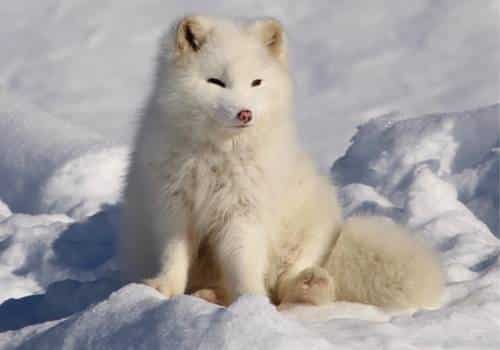
Kingdom: Animalia
Phylum: Chordata
Class: Mammalia
Order: Carnivora
Family: Canidae
Genus: Vulpes
Scientific Name: V. lagopus
Fun Fact: The actual color of their skin is very dark.
There’s eight distinct subspecies of the Arctic fox, depending on where they’re found. They’re totally dependent on the lemmings numbers in their habitat since that forms their main food source. While Arctic fox numbers are relatively stable, any drop in lemmings populations will affect them too. Like many animals that live in the tundra, they are usually pure white but can change their coats to a shorter, more brown or grey coat during the summers.
Arctic Hare
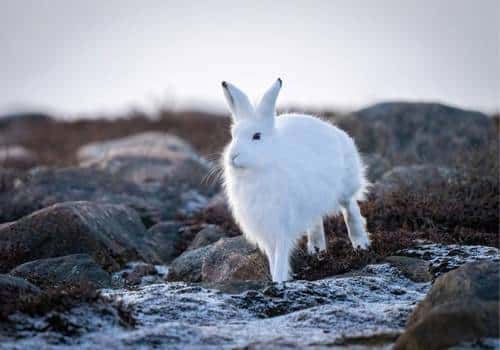
Kingdom: Animalia
Phylum: Chordata
Class: Mammalia
Order: Lagomorpha
Family: Leporidae
Genus: Lepus
Scientific Name: L. Arcticus
Fun Fact: Has long claws to better dig up snow.
They’re the biggest living members of the rabbit family. It has specially evolved to stay in freezing tundra climates which is why its ears are quite small by rabbit standards. It allows them to lose less heat from their ears. With thick fur covering every inch of its body, it burrows holes in the ground and under the snow to stay warm. They don’t hibernate.
Arctic Wolf
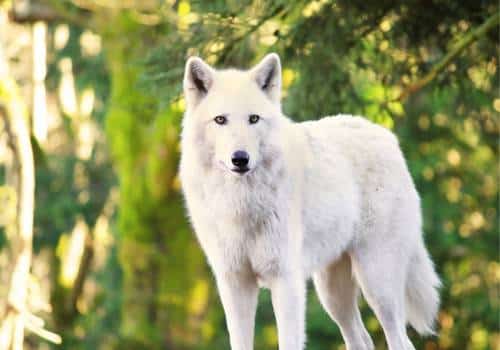
Kingdom: Animalia
Phylum: Chordata
Class: Mammalia
Order: Carnivora
Family: Canidae
Genus: Canis
Scientific Name: C. lupus arcticus
Fun Fact: They can travel thousands of kilometers on foot to find food.
Smaller than grey wolves, these white colored wolves are the only subspecies that aren’t threatened. Since they’re so isolated, they haven’t been hunted to near extinction like their more southern relatives. They hunt Arctic hares and caribou and don’t have any natural predators. The only problems that they face are climate change and recent industrial development.
Arctodus
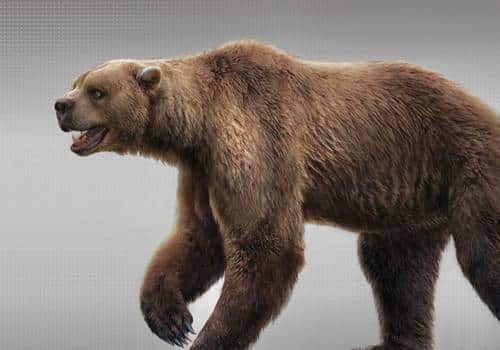
Kingdom: Animalia
Phylum: Chordata
Class: Mammalia
Order: Carnivora
Family: Ursidae
Genus: Arctodus
Fun Fact: Probably went extinct due to climate change and competition with black bears.
An extinct genus of short-faced bear that used to live in North America once upon a time, two species have been broadly recognised – the lesser short-faced bear and the giant short-faced bear. Both species were absolutely enormous in size and may well have been some of the largest terrestrial carnivores to ever exist, with big males probably weighing around 2090 lb (950 kg).
Arctotherium
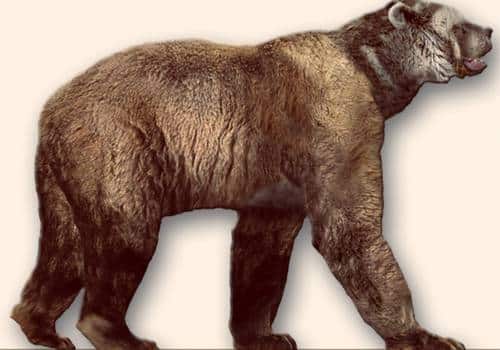
Kingdom: Animalia
Phylum: Chordata
Class: Mammalia
Order: Carnivora
Family: Ursidae
Genus: Arctotherium
Fun Fact: They lived largely in Argentina.
Short-faced bears found in Central and South America that probably migrated there from North America after the formation of the Isthmus of Panama, they aren’t genetically that similar to the arctodus. In fact, they share more genetic similarities with the spectacled bear. The earliest species was a giant form but later variations were closer in size to modern bears.
Argentavis Magnificens
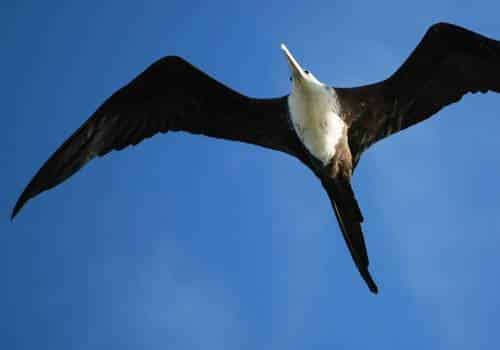
Kingdom: Animalia
Phylum: Chordata
Class: Aves
Order: Cathartiformes
Family: Teratornithidae
Genus: Argentavis Magnificens
Fun Fact: Probably ambush hunters that preyed mostly on terrestrial animals.
Known from several fossils obtained in the Epecuén and Andalhualá Formations in central and northwestern Argentina, these were some of the largest flying birds to ever exist. One single partially damaged humerus has been found which is just slightly shorter than the entire human arm. Thus, this gives a good indication of its wingspan. It has been estimated to be the heaviest flying bird of all time.
Argentine Black and White Tegu
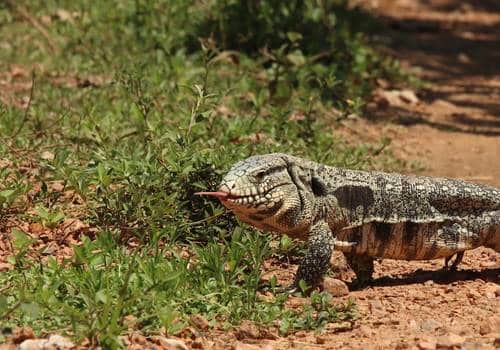
Kingdom: Animalia
Phylum: Chordata
Class: Reptilia
Order: Squamata
Family: Teiidae
Genus: Salvator
Scientific Name: S. merianae
Fun Fact: Born emerald green as hatchlings.
The largest of all the tegu lizards, this species is quite adaptable in nature. You’ll find them in all kinds of environments in Argentina, from tropical rainforests to arid semi-deserts and savannas. They’re often valued as pets because they’re a very intelligent species and can be house broken. Tegus spend most of the winter inactive and sleeping even though they don’t technically hibernate.
Argentine Horned Frog
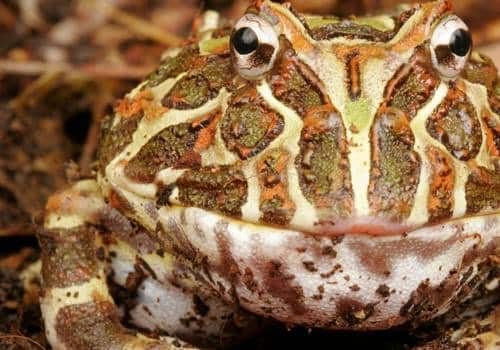
Kingdom: Animalia
Phylum: Chordata
Class: Amphibia
Order: Anura
Family: Leptodactylidae
Genus: Ceratophrys
Scientific Name: C. Ornata
Fun Fact: They attract prey by remaining absolutely motionless.
Found in the grasslands of Argentina, Bolivia and Uruguay, they’re the most common species of horned frogs. They’re voracious eaters and will try to eat almost anything, from insects and lizards to rodents and other frogs. Beautiful and bright frogs with red and green markings, they’re often kept as pets. The females are bigger than the males but it’s hard to tell differences before they’re fully grown.
Argentinosaurus

Kingdom: Animalia
Phylum: Chordata
Genus: Argentinosaurus
Fun Fact: There is a reconstructed skeleton in the Fernbank Museum of Natural History, Atlanta, Georgia.
One of the largest sauropod dinosaurs in the world (or even land mammals of all time, this dinosaur has a very long neck and tail. There is lots of debate among paleontologists but many believe that this species could definitely have been the longest dinosaur of all time, measuring around 98 – 115 feet in total.
Arizona Bark Scorpion
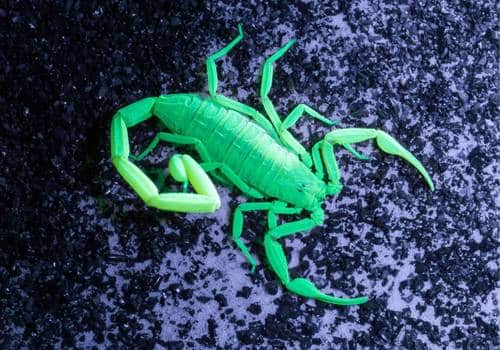
Kingdom: Animalia
Phylum: Arthropoda
Class: Arachnida
Order: Scorpiones
Family: Buthidae
Genus: Centruriodes
Scientific Name: C. sculpturatus
Fun Fact: Travel in packs during winters.
The Arizona bark scorpion, considered a pest because of its tendency to crawl into homes, is about 7 – 8 cm. The female is slightly shorter than the male. Despite the small size, a sting from one of these creatures is quite dangerous. You’ll want to find out about the effects of the poison and a hospital visit might be necessary. Females can give birth to over 50 babies at a time.
Arizona Black Rattlesnake
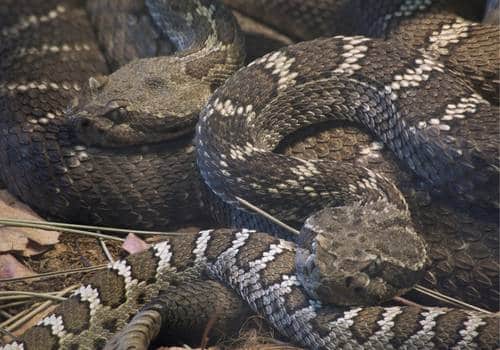
Kingdom: Animalia
Phylum: Chordata
Class: Reptilia
Order: Squamata
Family: Viperidae
Genus: Crotalus
Scientific Name: C. cerberus
Fun Fact: Undergo changes in color from juvenile to adult stages.
They can be pretty social animals and might form different kinds of associations with other rattlesnakes throughout their life. In fact, while some of this species do lead solitary lives, others prefer living in larger or smaller communities. Being almost fully black or dark brown or grey in color, they’re usually found in woodlands or grasslands. But it’s not impossible to hear of them being found in grasslands.
Arizona Blonde Tarantula
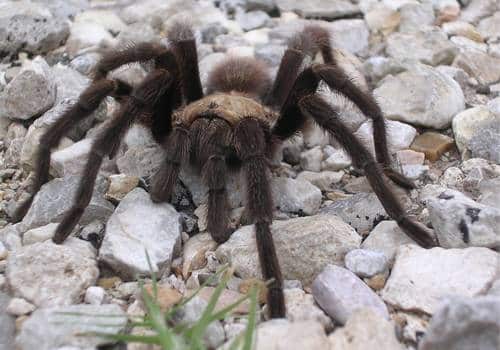
Kingdom: Animalia
Phylum: Arthropoda
Class: Arachnida
Order: Araneae
Family: Theraphosidae
Genus: Aphonopelma
Scientific Name: A. chalcodes
Fun Fact: They move quite slowly and hunt by ambush.
Arizona is home to several dangerous species but the blond tarantula isn’t one of them. They look intimidating, with their dark skin covered in blond fur and a leg span of 5 inches, but they’re actually quite docile by nature. They do well in desert conditions and are primarily found in southwestern USA – Arizona, New Mexico and California.
Arizona Coral Snake
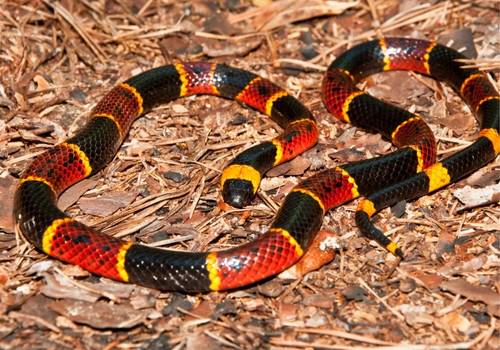
Kingdom: Animalia
Phylum: Chordata
Class: Reptilia
Order: Squamata
Family: Elapidae
Genus: Micuroides
Scientific Name: M. euryxanthus
Fun Fact: Shy and non-agressive species and usually avoid confrontations.
These attractive looking creatures with bands of red, yellow and black are known for their vibrant patterns. But did you know that there’s a purpose for it? It warns predators of the fact that they’re extremely venomous, one of the most venomous snakes in North America in fact. They belong to the same family as cobras and mambas so it’s not surprising.
Armadillo

Kingdom: Animalia
Phylum: Chordata
Class: Mammalia
Order: Cingulata
Family: Dasypodidae
Genus: Dasypus
Scientific Name: Dasypodidae
Fun Fact: Only mammals that have a fully developed shell.
Their name means little armored one in Spanish and they’re found mostly in South America. (Only one species exists outside of South America, in North America, and they migrated there after the formation of the Isthmus of Panama). Despite being known as the animals that can curl up into a ball when threatened, only two species can actually do that. They always give birth to either four females or four males.
Armadillo Lizard
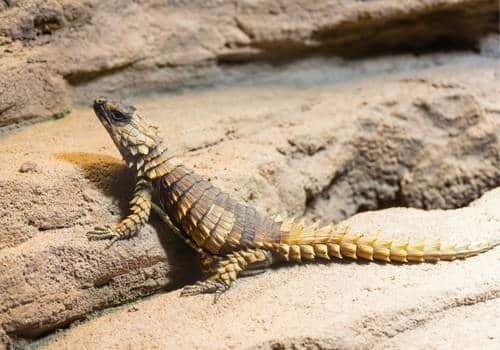
Kingdom: Animalia
Phylum: Chordata
Class: Reptilia
Order: Squamata
Family: Cordylidae
Genus: Ouroborus
Scientific Name: O. cataphractus
Fun Fact: They don’t lay eggs but give birth to babies directly.
Native to South Africa, these lizards are often compared to the Greek symbol of ouroboros, a serpent that eats its own tail. Just like armadillos (who are mammals and the lizards aren’t related to them in any way), the armadillo lizards are covered in hardened shells and roll into a ball when frightened. In that state, they look like the ouroboros. They’re often kept as pets and can survive for 25 years in captivity.
Armenian Gampr
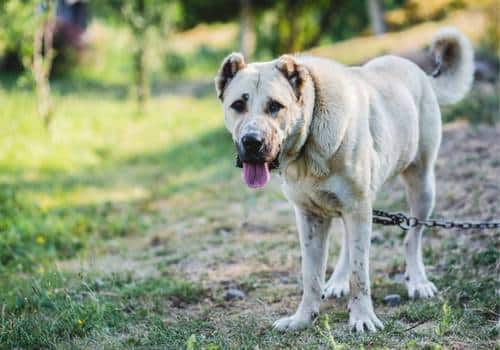
Kingdom: Animalia
Phylum: Chordata
Class: Mammalia
Order: Carnivora
Family: Canidae
Genus: Canis
Scientific Name: C. lupus familiaris
Fun Fact: A 1999 Armenian stamp features one of these dogs.
A livestock guardian breed, they’re native to the Armenian highlands and are actually the forefathers of the Caucasian shepherd dog. Large and powerful, reaching about 60 cm at the shoulder, they’re double coated dogs as most shepherds are. They come in a variety of browns, creams and blacks and are even now used to protect sheep flocks from wolves.
Armored Catfish
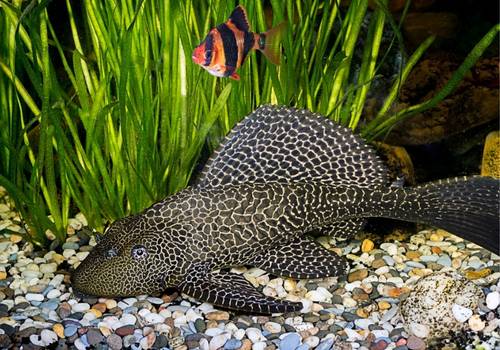
Kingdom: Animalia
Phylum: Chordata
Class: Actinopterygii
Order: Siluriformes
Family: Loricariidae
Fun Fact: Also called suckerfish because of their lack of teeth.
For all its mean looks, it’s not a dangerous fish. It doesn’t bite or attack people since it doesn’t actually have any teeth. Found in tropical freshwater habitats such as in countries like Costa Rica or several countries in Africa, they have been introduced elsewhere by humans. It has a triangular shaped body and bony plates and they mostly survive on algae or fish eggs.
Armyworm
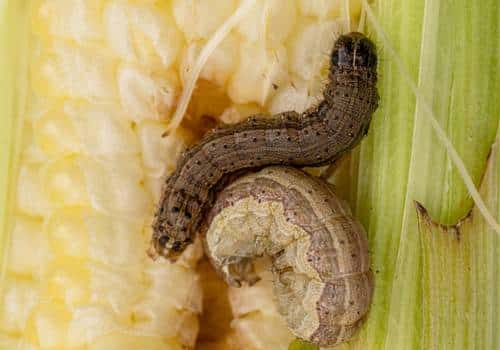
Kingdom: Animalia
Phylum: Arthropoda
Class: Insecta
Order: Lepidoptera
Family: Noctuidae
Genus: Mythimna
Scientific Name: M. unipuncta
Fun Fact: African farmers lose 13 billion dollars worth of crops to these insects.
The name is a misnomer since they aren’t worms at all. They’re caterpillars that grow into moths. And they’re named because they often march in large groups from plant to plant in search of food. They’re perpetually hungry and eat key staples like wheat, rice, maize, millet and sorghum. Thus, they’re a menace to farmers. Originally from the Americas, they can now be spotted in most of the African countries.
Arsinoitherium
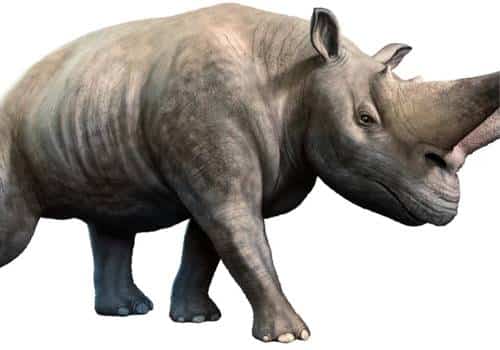
Kingdom: Animalia
Phylum: Chordata
Class: Mammalia
Order: Embrithopoda
Family: Arsinoitheriidae
Genus: Arsinoitherium
Scientific Name: Arsinoitherium
Fun Fact: Both males and females had horns.
This extinct genus of mammals are related to elephants and sea cows. Found in tropical rainforetsts and mangrove swamps in North Africa about 30 million years ago, these herbivores stood at about 5.7 feet at the shoulder. Reconstruction shows that they looked like rhinos although they aren’t closely related to them.
Arthropleura
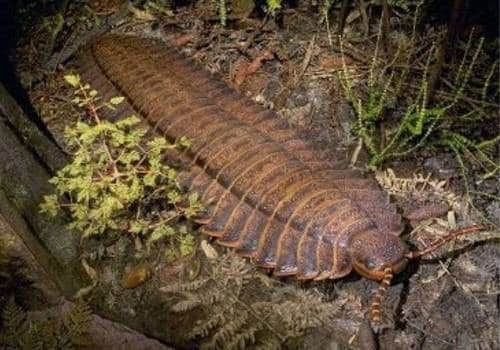
Kingdom: Animalia
Phylum: Arthropoda
Class: Diplopoda
Order: Arthropleurida
Family: Arthropleuridae
Genus: Arthropleura
Scientific Name: A. armata
Fun Fact: Largest known land invertebrates of all time.
An extinct genus of massive millipedes from North America and Europe, the arthropleura lived over 300 million years ago. They didn’t have many natural predators, if they had any at all. All the fossils that have been found of these creatures are believed to have been molting shells, not actuall carcasses. Evidence seems to point at the fact that they lived in open grasslands and not forests.
Aruba Rattlesnake
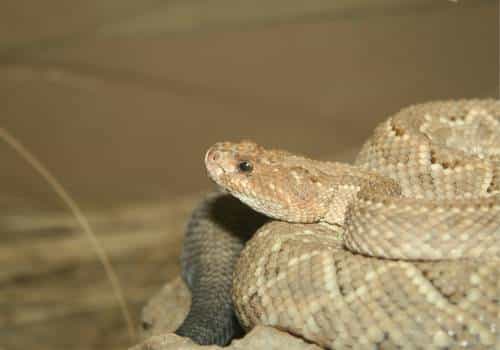
Kingdom: Animalia
Phylum: Chordata
Class: Reptilia
Order: Squamata
Family: Viperidae
Genus: Crotalus
Scientific Name: C. unicolor
Fun Fact: Rarest rattlesnake in the world.
Found solely on the island of Aruba off Venezuela, it is critically endangered. Seriously, less than 250 individuals probably survive in the wild. They live in harsh and dry climates, filled with acacia bushes and mostly survive on small birds and lizards. They have slowly been dying out because boas introduced on the island have been preying on the same prey base as the rattlesnakes.
Ashy Mining Bee
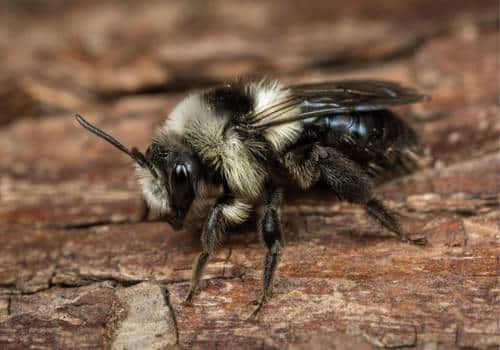
Kingdom: Animalia
Phylum: Arthropoda
Class: Insecta
Order: Hymenoptera
Family: Andrenidae
Genus: Andrena
Scientific Name: A. cineraria
Fun Fact: Very important pollinator in Europe.
Found in Europe, they’re easily recognized because of their color. The females are black with broad grey bands across their thorax. Ranging all the way from Ireland through central England to Scandinavia, these bees are very common and generally considered quite docile. You’ll find them nesting in parks and gardens from April to June.
Asian Arowana
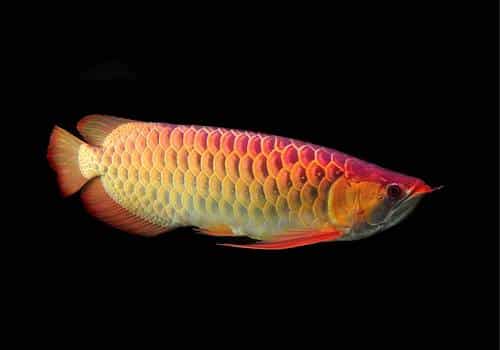
Kingdom: Animalia
Phylum: Chordata
Class: Actinopterygii
Order: Osteoglossiformes
Family: Osteoglossidae
Genus: Scleropages
Scientific Name: S. formosus
Fun Fact: Also called the dragon fish.
A very pretty fish with large-sized scales, they come in three colors – red and green, silver, and gold. One of the most expensive aquarium fish in the world, they’re bony fish with an elongated body. They usually swim close to the surface of the water and are ambush predators that take their prey by surprise. Their diets include insects, small fish and crustaceans.
Asian Carp
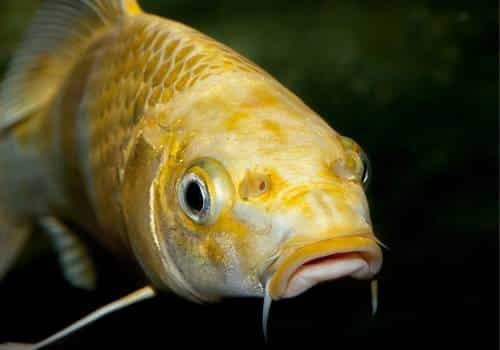
Kingdom: Animalia
Phylum: Chordata
Class: Actinopterygii
Order: Cypriniformes
Family: Cyprinidae
Genus: Cyprinus
Fun Fact: Widely found in the Great Lakes of the US.
Asian carp is the general name given to four different species – black carp, silver carp, bighead carp and grass carp. They aren’t the only carp that are native to Asia but they’re the four species that are meant by that catch-all term. Originating in eastern Asia, they were deliberately introduced in the United States in the 1960s. They were brought to control aquatic algae and weeds since they eat them.
Asian Cockroach
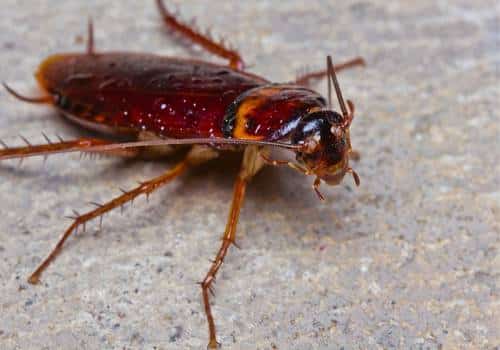
Kingdom: Animalia
Phylum: Arthropoda
Class: Insecta
Order: Blattodea
Family: Ectobiddae
Genus: Blattella
Scientific Name: B. asahinai
Fun Fact: Carry several germs and diseases that affect humans.
Originating in southeast Asia, the Asian cockroach has now spread throughout the world. These cockroaches can actually use their wings to fly which isn’t the case with most cockroaches. It’s believed that they first came to the US from Japan in the 1980s on import boats. They’re very commonly found in the southern states.
Asian Elephant
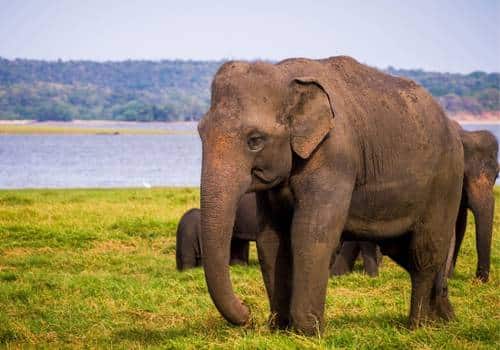
Kingdom: Animalia
Phylum: Chordata
Class: Mammalia
Order: Proboscidea
Family: Elephantidae
Genus: Elephas
Scientific Name: E. maximus
Fun Fact: Closest living relative of the extinct mammoths as the only existing member of the Elephas gene.
Sitting firmly in the middle of the three existing elephant species as far as size is concerned, they’re found throughout the Indian subcontinent and southeast Asia. Only the males have tusks and their ears are much smaller than the ears of the African bush elephant. It can live in a variety of habitats – from dry deciduous forests to tropical evergreen forests. They have been domesticated for centuries.
Asian Giant Hornet
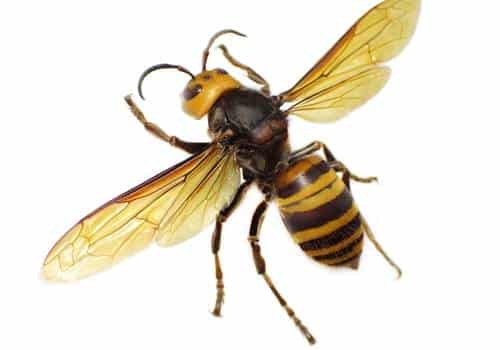
Kingdom: Animalia
Phylum: Arthropoda
Class: Insecta
Order: Hymenoptera
Family: Vespidae
Genus: Vespa
Scientific Name: V. mandarinia
Fun Fact: Only females have stingers.
Also called murder hornets, they’re the largest wasp species in the world. Even the worker hornets can grow to 2 inches with a wingspan of 3 inches. Queens are even larger. These wasps often build their nests in burrows on the ground and only very occasionally rest far off the ground. They’re very aggressive about defending their nests but they don’t usually bother humans if their nests are left alone.
Asian Lady Beetle
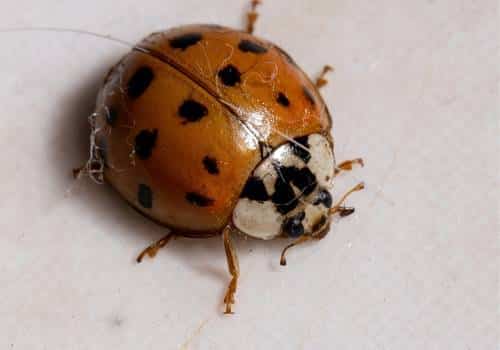
Kingdom: Animalia
Phylum: Arthropoda
Class: Insecta
Order: Coleoptera
Family: Coccinellidae
Genus: Harmonia
Scientific Name: H. axyridis
Fun Fact: Nicknamed harlequin and pumpkin ladybird.
Native to eastern Asia but later introduced in North America and Europe, they’re considered a beneficial insect by gardeners because they eat other harmful insects like aphids and spider mites. While we’re used to seeing the beetles that are red with black spots on their wings, they actually come in a variety of colors and markings. They don’t usually bite humans but it can be painful if they do.
Asian Longhorn Beetle
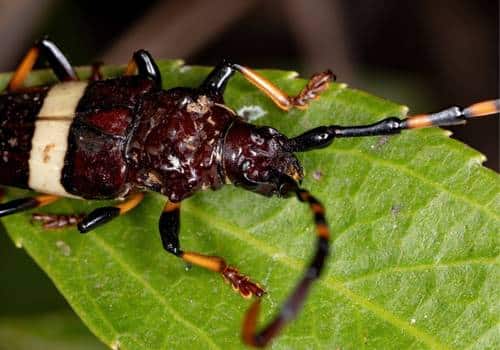
Kingdom: Animalia
Phylum: Arthropoda
Class: Insecta
Order: Coleoptera
Family: Cerambycidae
Genus: Anoplophora
Scientific Name: A. glabripennis
Fun Fact: Males live for 50 days and females for 66 days.
Named because of the antenna on their heads which look like long, curved horns, these beetles are black in color with white spots all over. Native to east Asia, they were accidentally introduced to Europe and North America years ago. These insects usually live in mixed forests and are most active during the day. They’re strict herbivores.
Asian Palm Civet
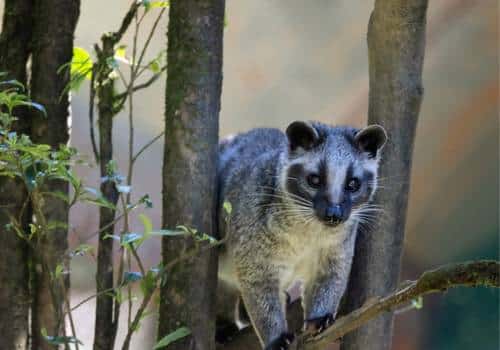
Kingdom: Animalia
Phylum: Chordata
Class: Mammalia
Order: Carnivora
Family: Viverridae
Genus: Paradoxurus
Scientific Name: P. hermaphroditus
Fun Fact: Used to produce kopi luwak (civet coffee) in Indonesia.
Native to south and southeast Asia, they’re not threatened with extinction in the slightest. With their large eyes, white mask and furry body, these animals are pretty cute to look at. They’re solitary animals but still have a variety of ways to communicate with one another. One of the main ways is by scent by secreting pungent substances from their anal glands.
Asian Vine Snake
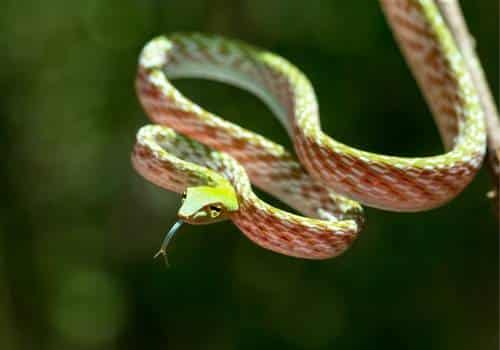
Kingdom: Animalia
Phylum: Chordata
Class: Reptilia
Order: Squmata
Family: Colubridae
Genus: Ahaetulla
Scientific Name: A. prasina
Fun Fact: Slow metabolism and eats infrequent meals.
This non-venomous Asian vine snake is native to south Asia. Known for their vibrant green color, these snakes are primarily arboreal and spend most of their lives up trees. It’s great at camouflage and can hide itself in plain sight both to escape predators and catch prey. It has a long, slender body of 4 to 5 feet in length.
Asian Water Monitor
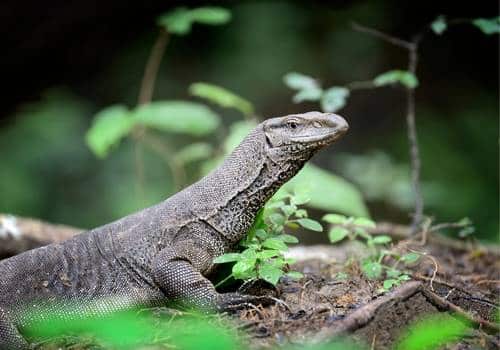
Kingdom: Animalia
Phylum: Chordata
Class: Reptilia
Order: Squamata
Family: Varanidae
Genus: Varanus
Scientific Name: V. salvator
Fun Fact: Can climb trees to escape the king cobra.
Semiaquatic and excellent swimmers, the Asian water monitor is native to south and southeast Asia. It is one of the largest monitor lizards in the world with a long, muscular body. They have large serrated teeth and sharp claws which make them effective predators. They mostly live in swamps, wetlands and mangrove forests but won’t shy away from agricultural areas either.
Asiatic Black Bear
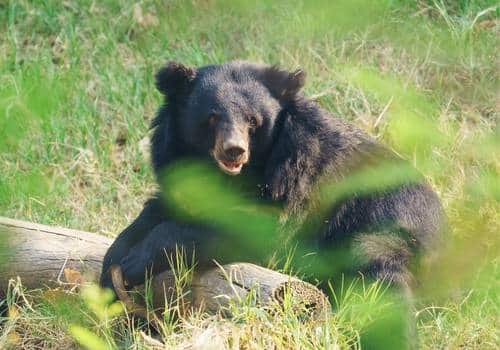
Kingdom: Animalia
Phylum: Chordata
Class: Mammalia
Order: Carnivora
Family: Ursidae
Genus: Ursus
Scientific Name: U. tibetanus
Fun Fact: Usually hibernates from November to March.
Found mostly in the northern parts of the Indian subcontinent, the Himalayas, mainland southeast Asia and parts of Korea, China, Japan, Taiwan and Russia, these bears are largely arboreal. With black fur and a large white patch on their chests, the average weight of an adult male is 300 lb and an adult female is 275 lb. They might be one of the largest arboreal animals in the world although older males might get too heavy to climb trees.
Asp
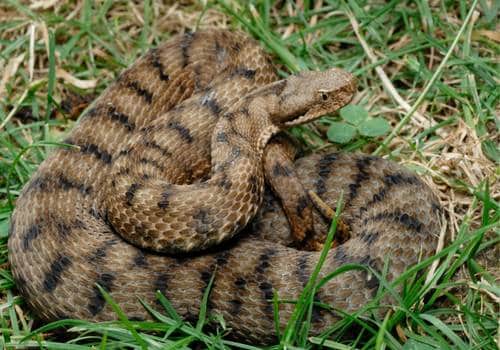
Kingdom: Animalia
Phylum: Chordata
Class: Reptilia
Order: Squamata
Family: Viperidae
Genus: Vipera
Scientific Name: V. aspis
Fun Fact: Symbol of royalty in Egypt.
Known as the cause of Cleopatra’s death, asps are an extremely venomous species of snake. For this reason, they’re often called the Egyptian cobra. They’re remarkable climbers and are found scaling walls, trees and buildings. Native to Africa and parts of the middle east, they can strike at lightning fast speeds.
Asp Caterpillar
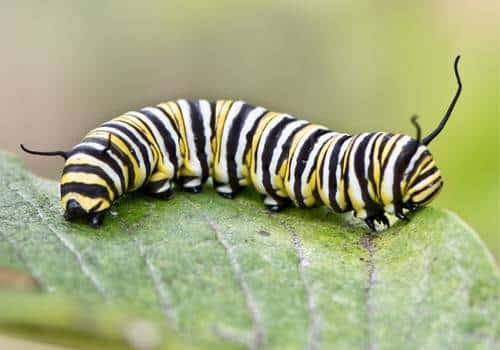
Kingdom: Animalia
Phylum: Arthropoda
Class: Insecta
Order: Lepidoptera
Family: Megalopygidae
Genus: Megalopyge
Fun Fact: Birds aren’t usually affected by the venom and prey on these caterpillars.
Voracious eaters, the asp caterpillar feed on leaves and plants. They’re found throughout the world and are named because they carry a venom. This venom is often used in traditional medicines but they can also cause severe irritation and even allergic reactions if you get it on your skin. Some species make communal nests or tents of silk and protect themselves within it.
Assassin Bug
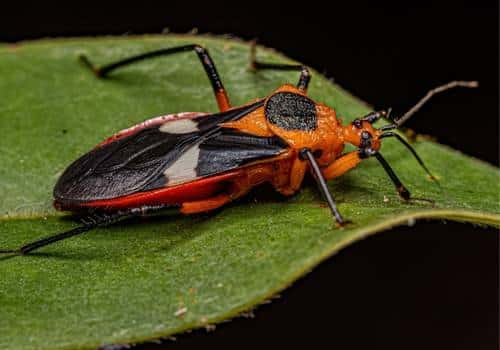
Kingdom: Animalia
Phylum: Arthropoda
Class: Insecta
Order: Hemiptera
Family: Reduviidae
Genus: Reduvius
Scientific Name: Reduviidae
Fun Fact: They’re considered ‘true bugs’ unlike ants and bees.
These carnivorous and predatory bugs hunt down other insects to eat them. Thus, their name. Varying in size from 4 to 40 mm and coming in all kinds of colors, there are several different species. They are so dangerous that they can kill a cockroach in just 3 – 4 seconds and a caterpillar within 10 seconds. Females are better hunters because they need more protein to reproduce.
Assassin Snail
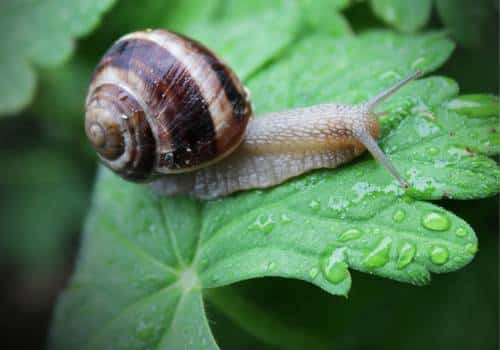
Kingdom: Animalia
Phylum: Mollusca
Class: Gastropoda
Order: Neogastropoda
Family: Nassariidae
Genus: Clea
Scientific Name: C. helena
Fun Fact: Native to Malaysia, Indonesia and Thailand.
Called that because they’re carnivores that bury themselves in substrate and wait to catch something to eat, these snails are particularly interested in eating other snails. It doesn’t matter to them whether the prey is smaller or bigger than them because they’re ferocious when it comes to food. They also like eating snail eggs.
Atlantic Cod
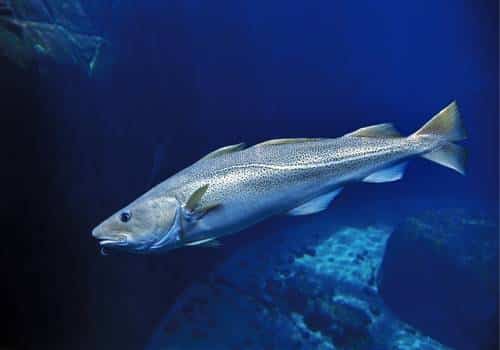
Kingdom: Animalia
Phylum: Chordata
Class: Actinopterygii
Order: Gadiformes
Family: Gadidae
Genus: Gadus
Scientific Name: G. morhua
Fun Fact: Live near the ocean floor on rocky slopes and ledges.
Found in the northwestern Atlantic Ocean, they can range all the way from Greenland down to North Carolina. Overfishing and loss of habitat has unfortunately affected their numbers and they aren’t as abundant as they once were in the US. Heavy bodied fish with large, blunt heads, Atlantic cod have whiskers on their lower jaw, just like catfish do.
Atlantic Salmon
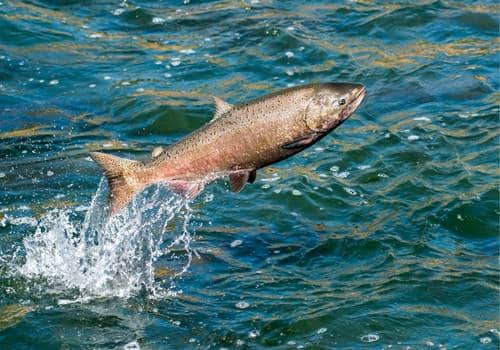
Kingdom: Animalia
Phylum: Chordata
Class: Actinopterygii
Order: Salmoniformes
Family: Salmonidae
Genus: Salmo
Scientific Name: S. salar
Fun Fact: Spend the first 2 – 3 years in freshwater and then move to the ocean.
The only kind of salmon that lives in the Atlantic Ocean as compared to the seven species that live in the Pacific Ocean, they’re usually just found in a few rivers in Maine. Young salmon migrate to the sea and stay there until they need to spawn. They’re carnivorous and eat small insects, fish and crustaceans. The largest Atlantic salmon ever found weighed 105 lb and was 60 inches long.
Atlantic Sturgeon

Kingdom: Animalia
Phylum: Chordata
Class: Actinopterygii
Order: Acipenseriformes
Family: Acipenseridae
Genus: Acipenser
Scientific Name: A. oxyrinchus oxyrinchus
Fun Fact: Don’t have scales but bony plates called scutes.
An old species, the Atlantic sturgeon is often considered a living fossil. Found mainly in eastern North America, an introduced population also lives in the Baltic region of Europe. They’re big and long-lived fish. In fact, specimens can live up to 60 years and reach 800 lb (360 kg) in weight. They’re an extremely threatened species.
Atlas Beetle
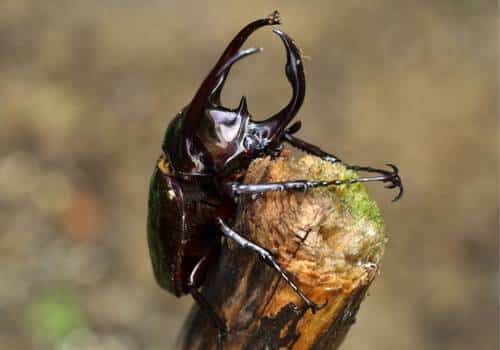
Kingdom: Animalia
Phylum: Arthropoda
Class: Insecta
Order: Coleoptera
Family: Scarabaeidae
Genus: Chalcosoma
Scientific Name: C. atlas
Fun Fact: Can lift objects that are 850 times their body weight.
Found throughout the world and thought to be pests in most places, these creatures are solitary and ferocious. They’re extremely strong – some of the strongest animals in the world. They can be kept in captivity and often are kept in terrariums. Atlas beetles live for around 8 – 12 months in the wild. They’re scavengers and usually prefer eating decayed fruit and rotting wood.
Atlas Moth
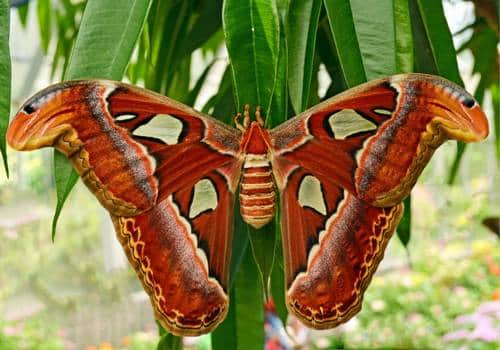
Kingdom: Animalia
Phylum: Arthropoda
Class: Insecta
Order: Lepidoptera
Family: Saturniidae
Genus: Attacus
Scientific Name: A. atlas
Fun Fact: Bigger wingspan than the human hand.
These massive moths are bigger than most moths in the world. Found in tropical forests in Asia, they have curved wing tips that look like cobra snake heads. They’re meant to keep predators at bay. Big even as caterpillars, they can reach up to 4.5 inches. Adult atlas moths don’t eat because they don’t have fully formed mouths and their sole goal is reproduction.
Aurochs
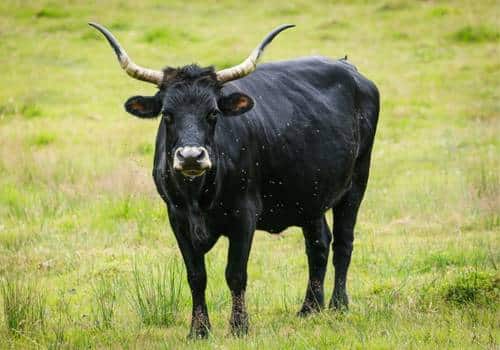
Kingdom: Animalia
Phylum: Chordata
Class: Mammalia
Order: Artiodactyla
Family: Bovidae
Genus: Bos
Species: B. primigenius
Fun Fact: Aurochs means wild ox in Old High German.
An extinct species of cattle, the aurochs was the ancestor of modern domestic cattle. However, it was a wild species and considerably larger than modern domestic cattle. In fact, aurochs stood at a height of around 61 – 71 inches at the shoulder, which would make them some of the biggest herbivores of their time. Probably originating in Asia and then moving westwards during the warm interglacial periods, the oldest fossils were found in India and North Africa.
Aussiedoodle
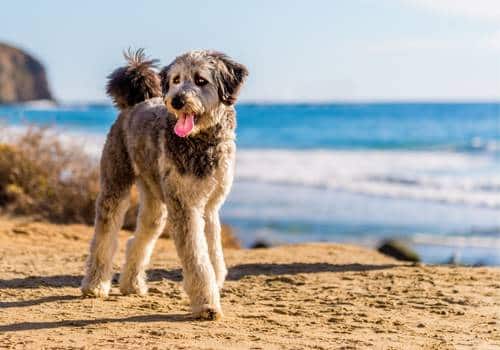
Kingdom: Animalia
Phylum: Chordata
Class: Mammalia
Order: Carnivora
Family: Canidae
Genus: Canis
Scientific Name: C. lupus familiaris
Fun Fact: Problem solvers by nature and often try to outsmart their owners.
Also called Aussiepoos, they were bred in the United States in the 1990s and have become a popular designer breed since then. This mix of Australian shepherd and poodle come in a mix of colors and sizes, depending on their parents. They’re a hypoallergenic breed which means they barely shed and are good for people who have dog allergies but still want to keep dogs. With soft curly coats and gentle dispositions, they’re extremely loyal to their families.
Aussiedor

Kingdom: Animalia
Phylum: Chordata
Class: Mammalia
Order: Carnivora
Family: Canidae
Genus: Canis
Scientific Name: C. lupus familiaris
Fun Fact: Only calm down after turning three years old.
A crossbreed between the Australian shepherd and the labrador, these dogs need plenty of exercise to burn off all their energy. They come in a variety of quite exotic colors – unlike their lab parents – including red, champagne and silver. With ice-blue eyes and coats in a variety of elegant colors, these dogs tend to be very pretty indeed. But you’ve got to keep them mentally and physically stimulated or they’ll quickly get bored and destructive.
Aussiepom
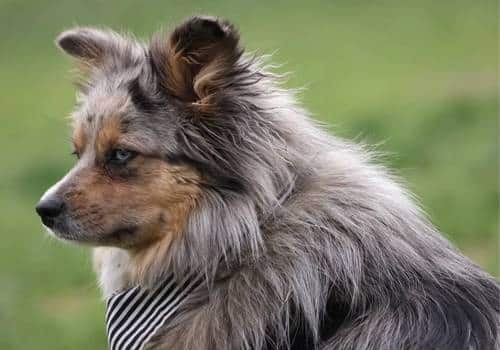
Kingdom: Animalia
Phylum: Chordata
Class: Mammalia
Order: Carnivora
Family: Canidae
Genus: Canis
Scientific Name: C. lupus familiaris
Fun Fact: Long lived dogs that can reach the age of fifteen.
These Australian shepherd-Pomeranian cross-breeds are fun loving and affectionate. For all that they’re small dogs, their energy levels are very high. With thick, fluffy coats from both their parents, Aussiepoms are adequately protected against cold weather. While the breed may have existed naturally for quite some time, it was created as a designer breed in the 2000s as an attractive and intelligent dog breed.
Australian Bulldog

Kingdom: Animalia
Phylum: Chordata
Class: Mammalia
Order: Carnivora
Family: Canidae
Genus: Canis
Scientific Name: C. lupus familiaris
Fun Fact: They tend to put on weight and need regular exercise.
With the typical wrinkles, muscular physique and broad flat face of the bulldog, the Australian bulldog is quite similar to its English cousins in some ways. However, they do have some bullmastiff and boxer in them. Bred to withstand the Australian climate, these dogs are more active than the typical bulldog. However, they certainly aren’t high energy dogs. An affectionate breed, they do well in families with young children. (The popular belief that bulldogs are violent and have nasty tempers is blatantly untrue.)
Australian Cattle Dog

Kingdom: Animalia
Phylum: Chordata
Class: Mammalia
Order: Carnivora
Family: Canidae
Genus: Canis
Scientific Name: C. lupus familiaris
Fun Fact: Puppies are born pure white and gain color later.
Bred by English settlers in the 1800s, the Australian cattle dog was bred from the Australian dingo and the Blue Merle to survive the hot Australian summers. This is what gives them their unique looks. Often called heelers, these working dogs are some of the most intelligent of dog breeds and can be trained to learn all sorts of tricks. With a dense double coat, they shed the undercoat twice a year and are water-resistant.
Australian Cockroach
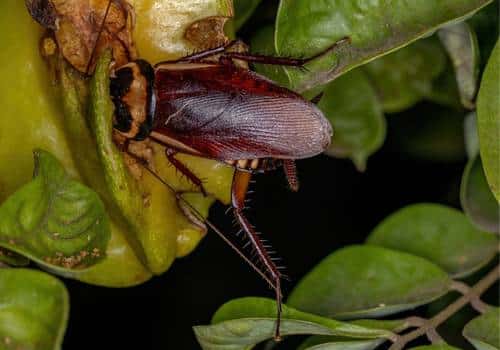
Kingdom: Animalia
Phylum: Arthropoda
Class: Insecta
Order: Blattodea
Family: Blattidea
Genus: Periplaneta
Scientific Name: P. australasiae
Fun Fact: They can hear you but only with their legs.
Cockroaches might not be the most inspiring animal to study but there’s several fascinating aspects to them. They’re some of the fastest insects in the world and can run fifty times their body length in the span of a second. They’re also social creatures who tend to get lonely and depressed when left to themselves. That’s a similarity with humans you must have never thought about. The Australian cockroach is pretty big, growing to around 5 cm.
Australian Firehawk
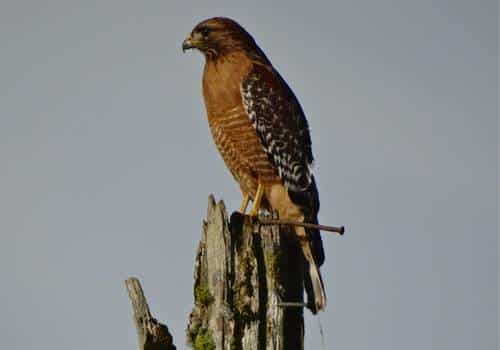
Kingdom: Animalia
Phylum: Chordata
Class: Aves
Order: Accipitriformes & Falconiformes
Fun Fact: They can spread fire up to a kilometer from the source.
They don’t even belong to the same family but Australian firehawks are grouped together because of where they live and their behavior. It’s been proved that these hawks intentionally spread wildfires by carrying burning branches to unburnt places. And why? To draw out insects, reptiles and small mammals so that they can hunt them. Many raptors hunt around fires but very few actively set them.
Australian Flathead Perch
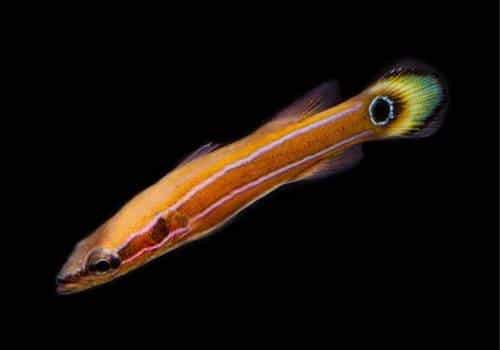
Kingdom: Animalia
Phylum: Chordata
Class: Actinopterygii
Order: Perciformes
Family: Serranidae
Genus: Rainfordia
Scientific Name: R. opercularis
Fun Fact: Though rare, they’re found in aquariums.
Found in the Indian Ocean off Western Australia, this perch is a very striking color – dark orange with lilac and black stripes. They’re often found around coral reefs. At one point, it was thought that they were found in Australia alone. But specimens have been found around West Papua in Indonesia. It’s generally a solitary fish.
Australian Gecko
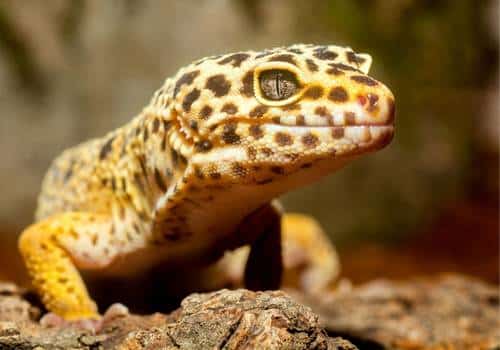
Kingdom: Animalia
Phylum: Chordata
Class: Reptilia
Order: Squamata
Fun Fact: Nightime color vision is 350 times more accurate than a human’s.
They’re found everywhere in Australia, from forests and deserts to inside people’s homes. Nocturnal by nature, these reptiles can climb up virtually anything, including smooth glass. They have 100 teeth and constantly replace them. Found in a variety of colors, these creatures don’t have any eyelids but just a thin membrane and they keep their eyes clean by licking them.
Australian Kelpie Dog
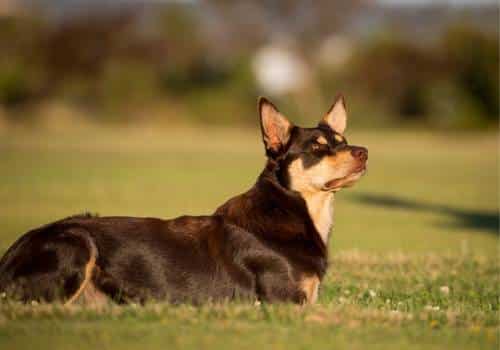
Kingdom: Animalia
Phylum: Chordata
Class: Mammalia
Order: Carnivora
Family: Canidae
Genus: Canis
Scientific Name: C. lupus familiaris
Fun Fact: One starred in the movie Love and Monsters.
Originating in Australia, these short and flat haired herding dogs are a hardworking breed. They do very well in dog sports since they’re extremely energetic and need lots of mental and physical stimulation. They’re also easy to train and tend to get very attached to their families. However, with their herding instincts come a tendency to be highly territorial so you’ll need to socialize them from a young age.
Australian Labradoodle

Kingdom: Animalia
Phylum: Chordata
Class: Mammalia
Order: Carnivora
Family: Canidae
Genus: Canis
Scientific Name: C. lupus familiaris
Fun Fact: Usually come in woolly chocolate colored coats.
You might be forgiven for thinking this designer breed has some Australian shepherd in them but they don’t. They were simply bred in Australia as special non-shedding guide dogs for visually impaired families who were allergic to dogs. They’re a thirty year old breed and are a mix of labradors and poodles, bred in a way that they don’t shed much. However, they do need to be regularly groomed, preferably in salons.
Australian Mist
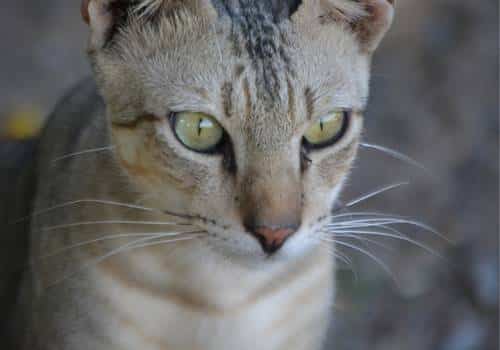
Kingdom: Animalia
Phylum: Chordata
Class: Mammalia
Order: Carnivora
Family: Felidae
Genus: Felis
Scientific Name: F. catus
Fun Fact: Love companionship and will curl up in its owner’s lap to sleep.
Docile and friendly indoor cats, the Australian mist is named for its delicate colors. Their coats often have swirled or spotted patterns in shades of cream, gold, peach and brown against a background of blue or lilac. With broad faces and rounded cheeks, these attractive cats are sure to win hearts. They’re gentle by nature and good for families with children or for elderly people.
Australian Retriever

Kingdom: Animalia
Phylum: Chordata
Class: Mammalia
Order: Carnivora
Family: Canidae
Genus: Canis
Scientific Name: C. lupus familiaris
Fun Fact: Their fur is water resistant.
A mix between the Australian shepherd and the golden retriever, it’s hardly a surprise that Australian retrievers are extremely lovable and loyal. Friendly and intelligent family dogs, these pooches inherit some of the best traits from both parents. They’re also extremely active so they aren’t well suited to a sedentary lifestyle. They have long double coats that tend to shed a lot and require regular maintenance.
Australian Shepherd

Kingdom: Animalia
Phylum: Chordata
Class: Mammalia
Order: Carnivora
Family: Canidae
Genus: Canis
Scientific Name: C. lupus familiaris
Fun Fact: Many of them unfortunately tend to develop vision and hearing problems.
Aussies, as they are affectionately called, are a unique American breed despite their name. Many people think they were bred from shepherd dogs that were imported from Australia but their origins remain mired in mystery. What we do know is that they were originally bred as ranch dogs to protect livestock and they’re quite closely related to British sheepdog breeds like collies, border collies and Shetland sheepdogs. They come in a variety of very pretty colors.
Australian Shepherd Mix

Kingdom: Animalia
Phylum: Chordata
Class: Mammalia
Order: Carnivora
Family: Canidae
Genus: Canis
Scientific Name: C. lupus familiaris
Fun Fact: Willing to both work and play at any time.
Australian shepherd mixes are usually loyal but playful dogs. With the best qualities of their Australian shepherd parents – intelligent and quick minds, sportiness and their charming good looks, there are many kinds of Australian shepherd mixes on the market. Many of them aren’t even always readily identifiable. One mixed breed that has become very popular is the Australian shepherd and labrador, which make for very inquisitive and smart pups.
Australian Terrier
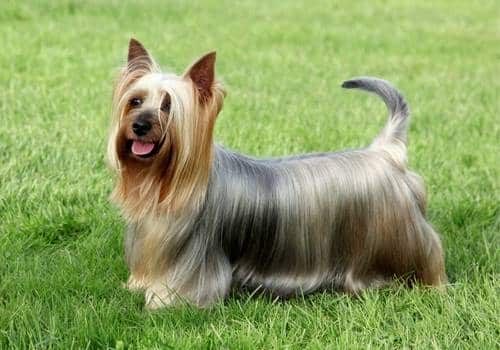
Kingdom: Animalia
Phylum: Chordata
Class: Mammalia
Order: Carnivora
Family: Canidae
Genus: Canis
Scientific Name: C. lupus familiaris
Fun Fact: Never fail to chase smaller animals because of their terrier blood.
Born adventurers, they may be small but they don’t lack courage. They have a keen sense of smell and are very alert by nature, which makes them great watch dogs despite their size. They have very expressive eyebrows and hardly shed at all so they’re excellent companions for people who don’t want dogs shedding on their carpets. They’re very good with small children and are fiercely loyal to their families.
Australopithecus

Kingdom: Animalia
Phylum: Chordata
Class: Mammalia
Order: Primates
Family: Hominidae
Genus: Australopithecus
Fun Fact: Ancestors of humans that lived millions of years ago.
An extinct genus of ancient hominids that existed in Africa, the Homo genera which includes modern humans descended from some species of Australopithecus. The first specimen was discovered in South Africa in 1925 but it was only in the 1940s that scientists began to accept that they were the common ancestors of both humans and chimpanzees. The brains of the Australopithecus weren’t as big as human brains but appear to have been bigger than chimpanzee brains.
Australorp Chicken
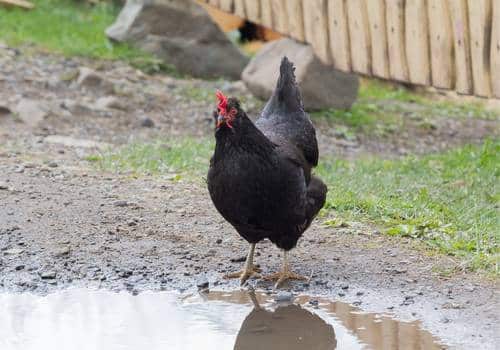
Kingdom: Animalia
Phylum: Chordata
Class: Aves
Order: Galliformes
Family: Phasianidae
Genus: Gallus
Scientific Name: G. gallus domesticus
Fun Fact: Good nest sitters and mothers.
This breed of chickens originated in Australiam, just as the name implies. The name Australorp stands for Australia Laying Orpingtons and the breed was developed from Orpingtons imported from England. They’re famous for laying 300 eggs per year which is a higher number than most breeds of chicken. They come in three colors – white, black and blue. But South Africa recognizes four more colors – golden, buff, splash and wheaten-laced.
Avocet
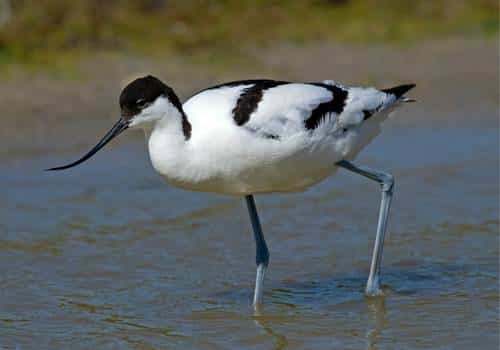
Kingdom: Animalia
Phylum: Chordata
Class: Aves
Order: Charadriiformes
Family: Recurvirostridae
Genus: Recurvirostra
Scientific Name: Recurvirostra
Fun Fact: Their beaks curve up, not down.
With four species with the genus, they’re wader birds with long, slim legs. They use their bills to sweep about from side to side in the wetlands in search of prey. They’re carnivorous by nature and usually feed on insects or small animals. The four species – American avocet, Andean avocet, pied avocet and red-necked avocet are found in North America, South America, Europe and Central Asia and Australia respectively.
Axanthic Ball Python
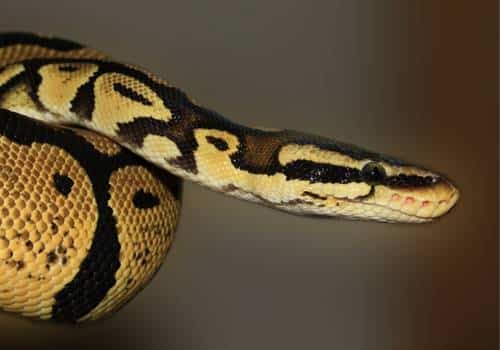
Kingdom: Animalia
Phylum: Chordata
Class: Reptilia
Order: Squamata
Family: Pythonidae
Genus: Python
Scientific Name: P. regius
Fun Fact: They’re very popular as pets and aren’t dangerous at all.
Native to the grasslands of West and Central Africa, it’s a unique type of ball python because it doesn’t have any yellow pigmentation. That’s what the Greek word “axanthic” in its name signifies. They’re extremely rare and weren’t developed in a lab but occurred naturally. This is why they often carry very heavy price tags. Juveniles are usually a striking black or white but they become more brown as they age.
Axolotl

Kingdom: Animalia
Phylum: Chordata
Class: Amphibia
Order: Caudata
Family: Ambystomatidae
Genus: Ambystoma
Scientific Name: A. mexicanum
Fun Fact: Only found in one lake in Mexico.
Axolotls are a particular species of salamander – the rarest species. We might think that they’re more common than they actually are because so many of them are kept as pets in the United States. Axolotls are remarkable in that they’re capable of regenerating so many parts of their body, including parts of their heart and brains! They come in a variety of colors, including white and pink and are carnivorous by nature. In fact, axolotls will eat just about anything.
Ayam Cemani
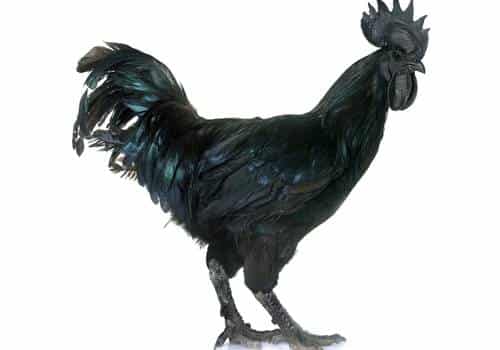
Kingdom: Animalia
Phylum: Chordata
Class: Aves
Order: Galliformes
Family: Phasianidae
Genus: Gallus
Scientific Name: Ayam cemani
Fun Fact: Every part of these chickens is black, including bones and internal organs.
This breed of chicken from Indonesia is a relatively new breed. Striking birds because of the extreme pigmentation of their tissues, these black chickens are expensive in the United States. The only thing about them that isn’t black are their eggs, which are cream colored with a slight rosy tint. They don’t lay too many eggs though because they’re poor nest sitters.
Aye-aye
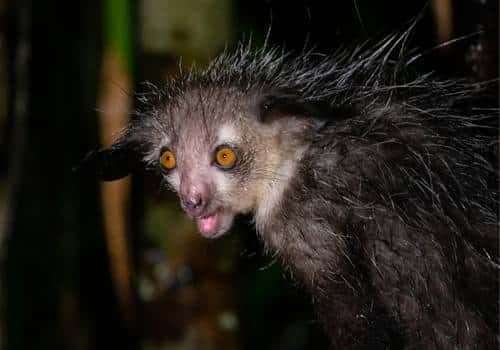
Kingdom: Animalia
Phylum: Chordata
Class: Mammalia
Order: Primates
Family: Daubentoniidae
Genus: Daubentonia
Scientific Name: D. madagascariensis
Fun Fact: Appear to double in size when threatened
Aye-ayes are primates but of a very weird sort indeed. Not only are their names strange, they also look quite funny with their large eyes, bat-like ears, mousy teeth and long fingers. These lemurs are found only in Madagascar and have a lot of superstitious beliefs attached to them. They’re believed to be bad luck and were once killed on sight, although they’re a protected species now. They’re nocturnal animals and spend most of the day sleeping in trees.
Azawakh

Kingdom: Animalia
Phylum: Chordata
Class: Mammalia
Order: Carnivora
Family: Canidae
Genus: Canis
Scientific Name: C. lupus familiaris
Fun Fact: Excellent vision and can track fast moving prey from a considerable distance.
Native to West Africa, they still aren’t widely available outside of the African continent. These dogs are leggy and can stand as tall as 2.5 feet. A very vocal breed, they communicate with a set of unique howls. They aren’t easily trained because they’re independent thinkers and not obedient by nature. They have a very strong hunting instinct and prey drive and usually need a firm hand. Not a good pet for first time dog owners.